
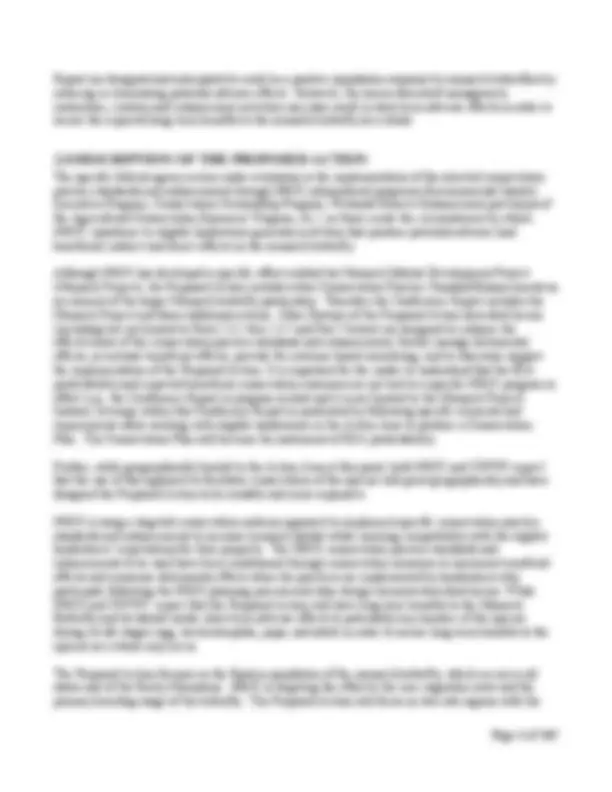
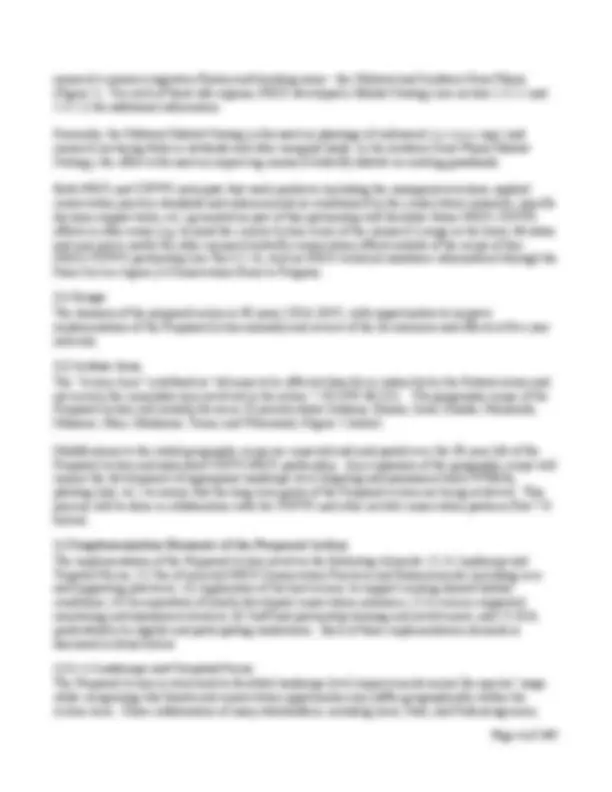
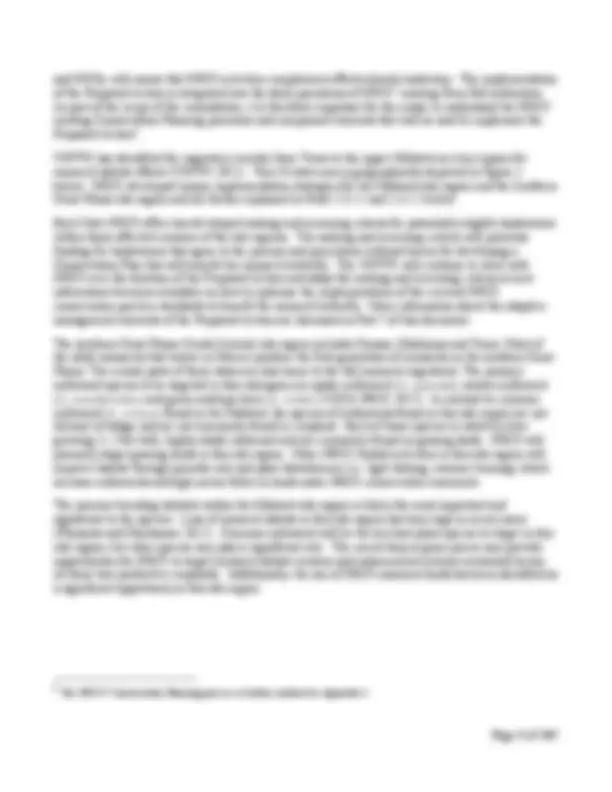
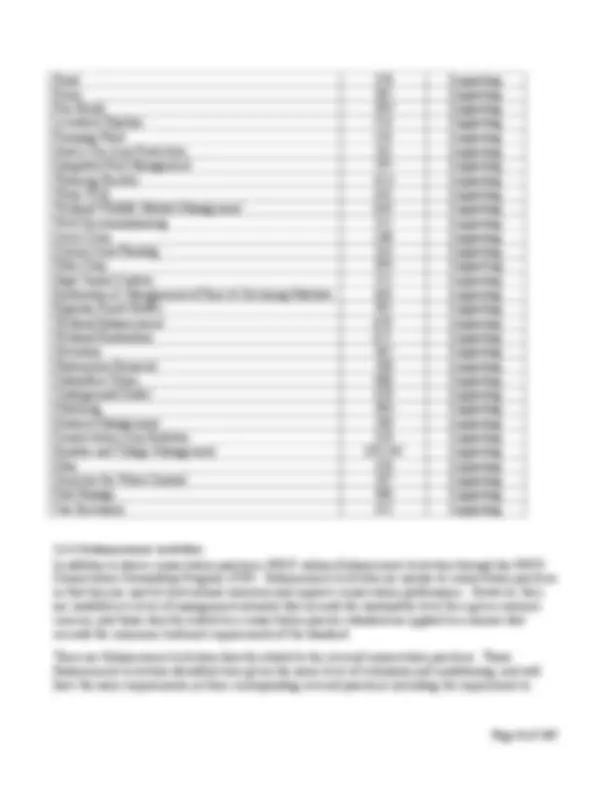
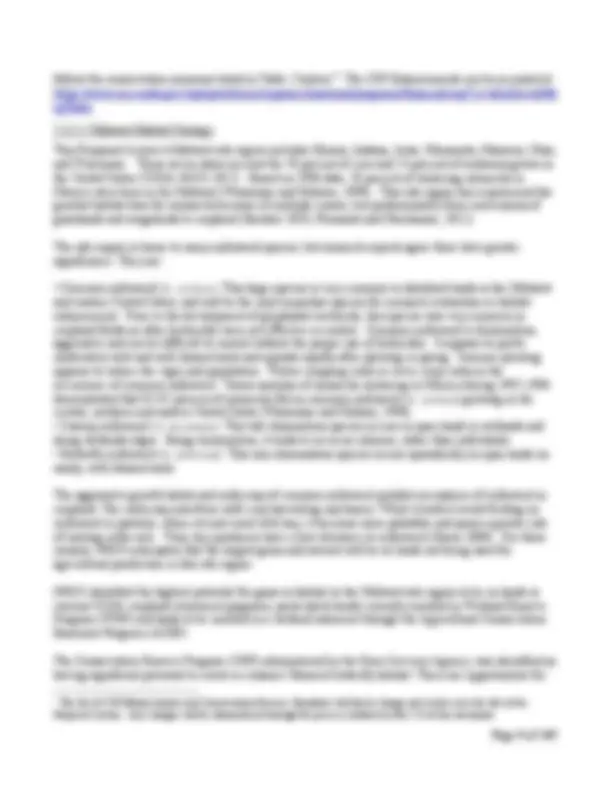
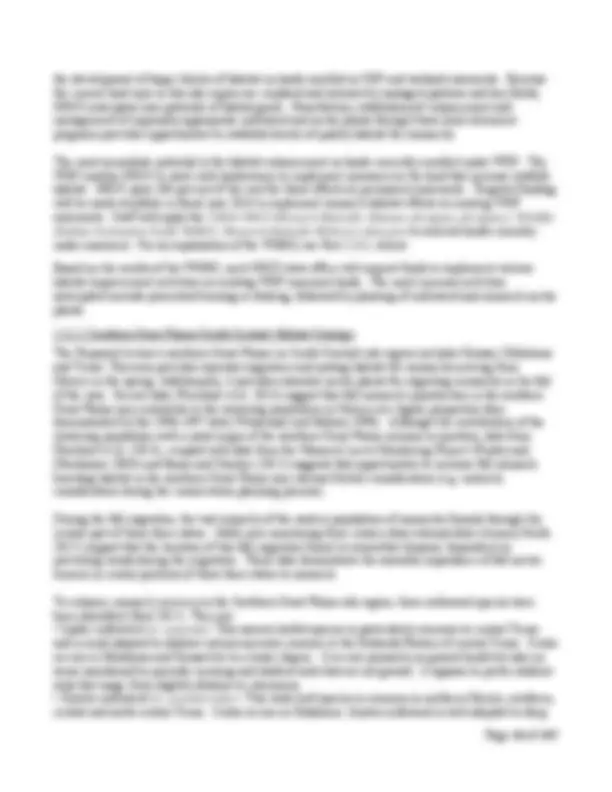
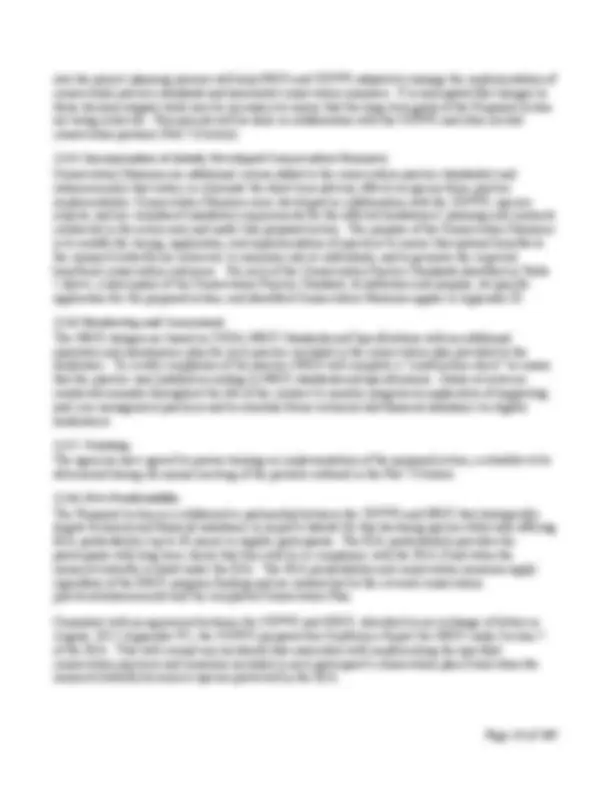
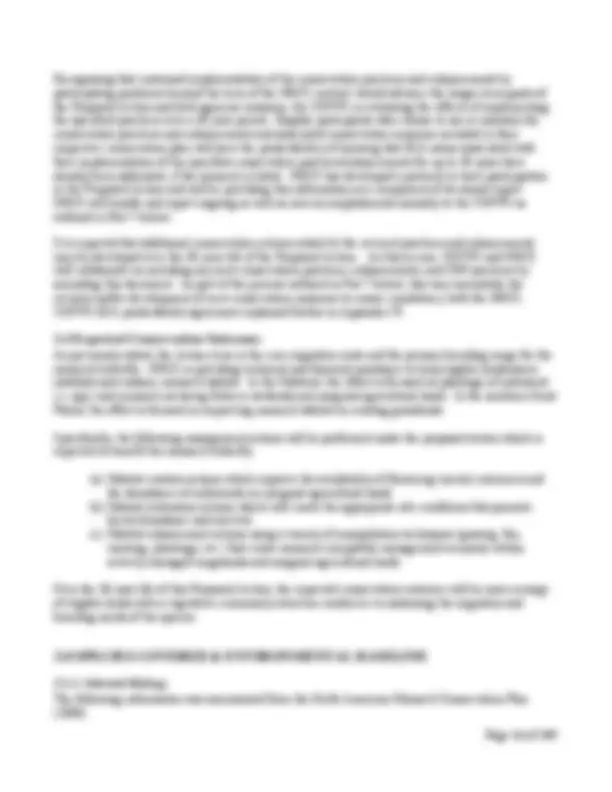
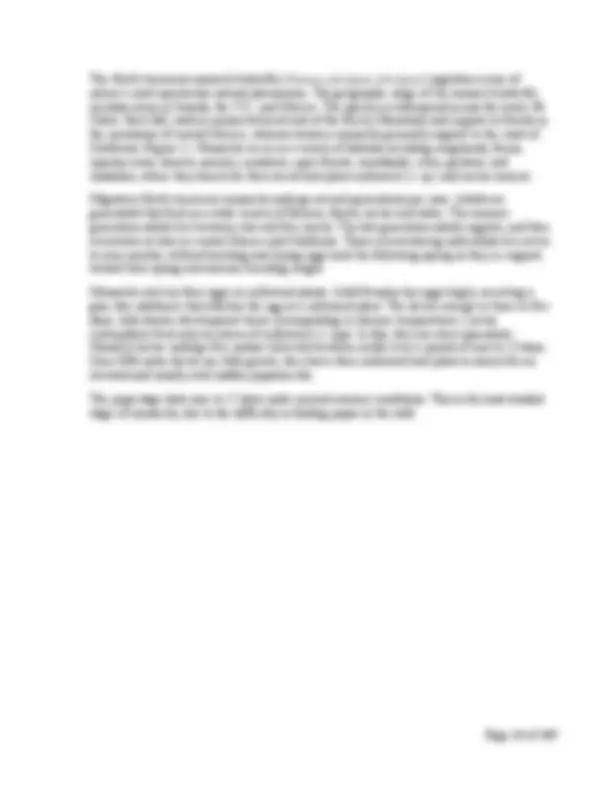
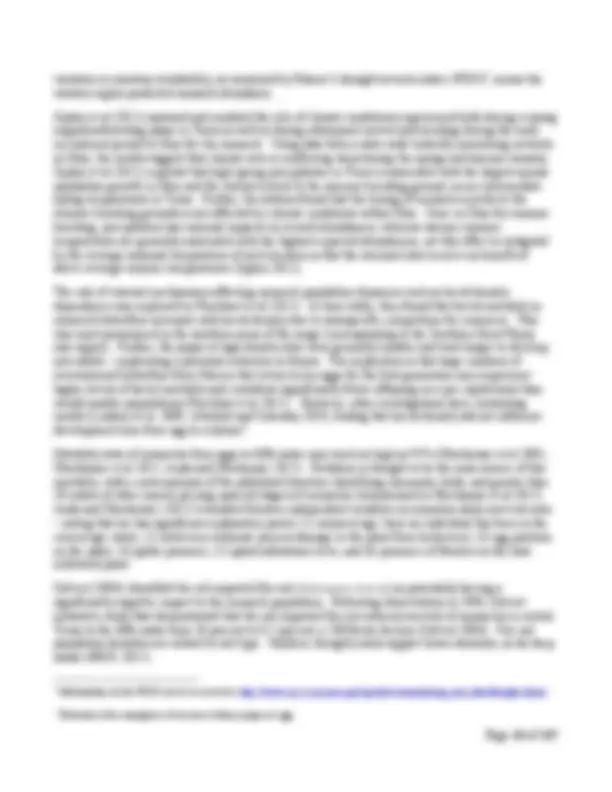
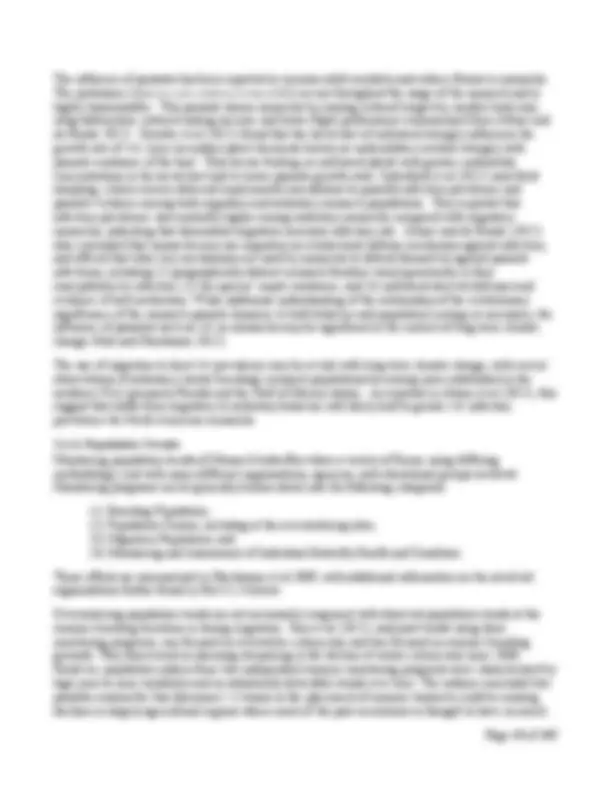
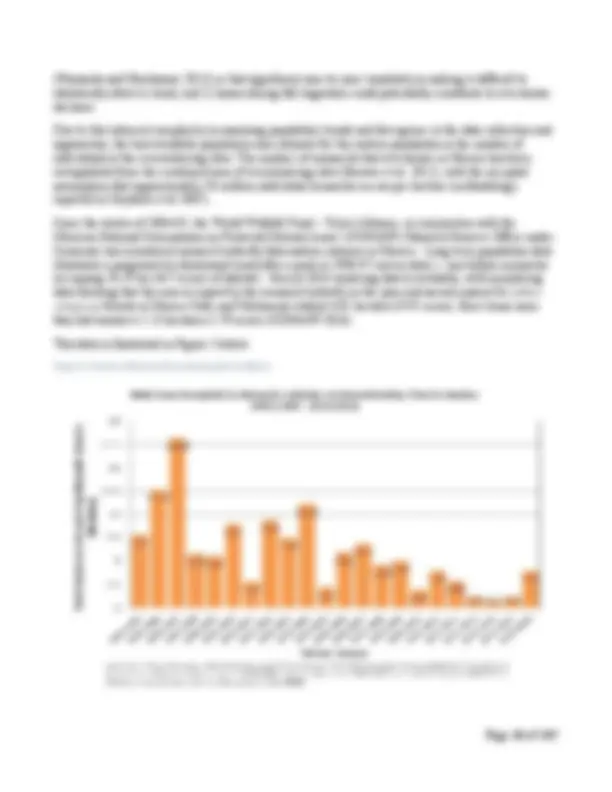
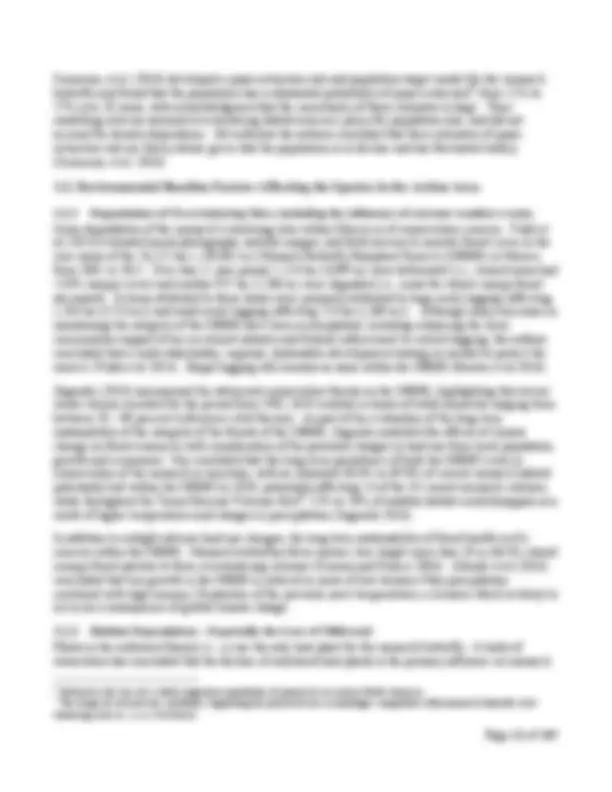
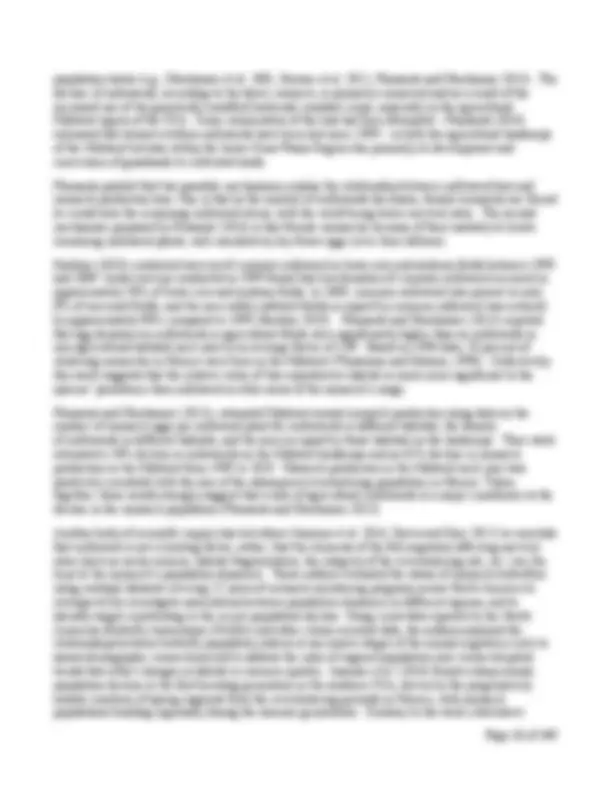
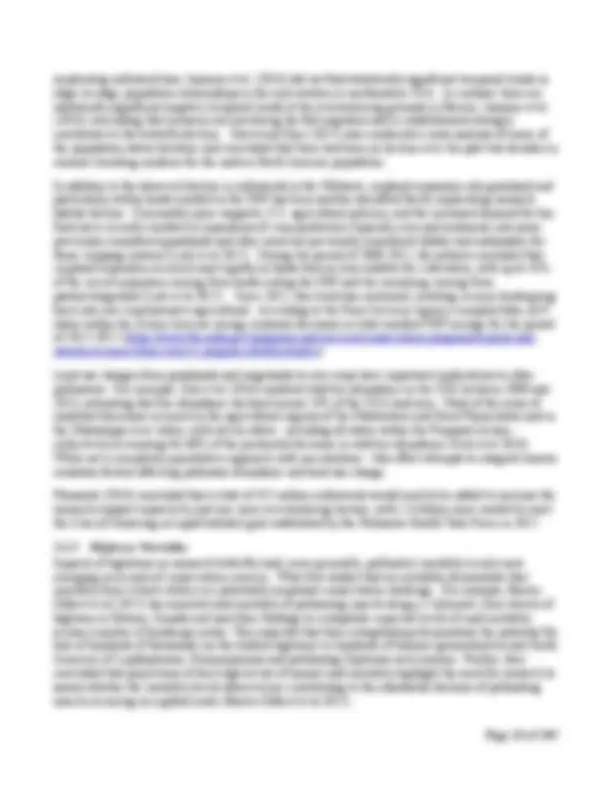
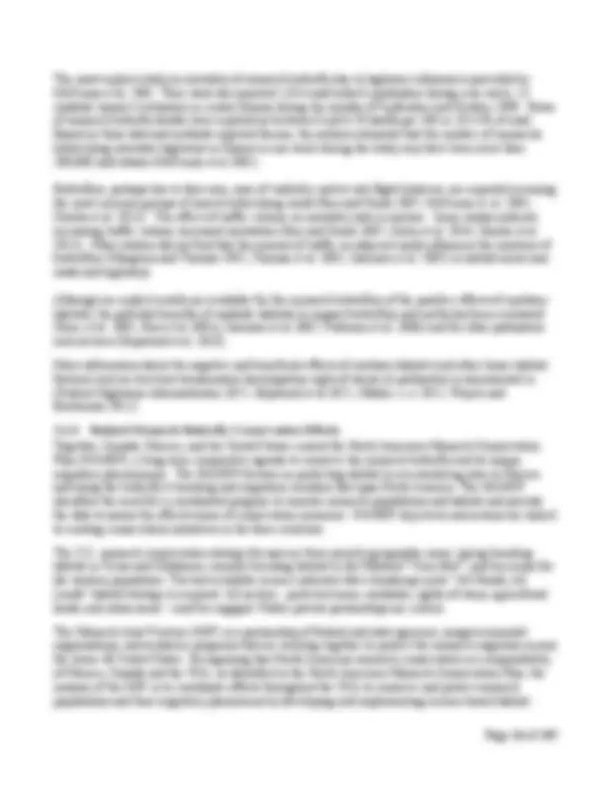
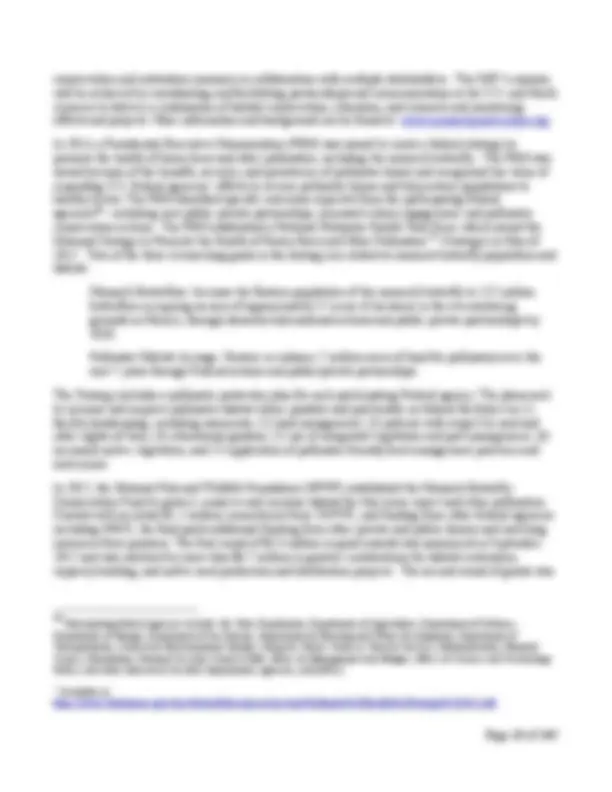
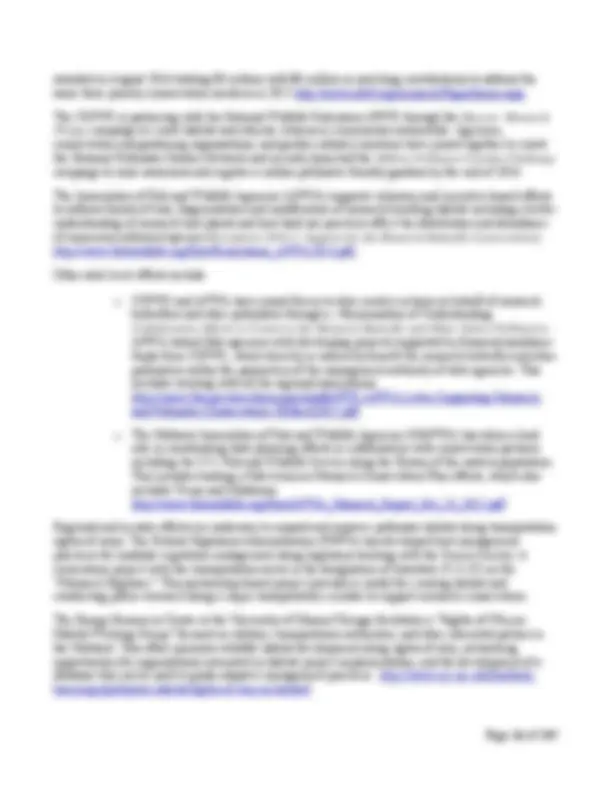
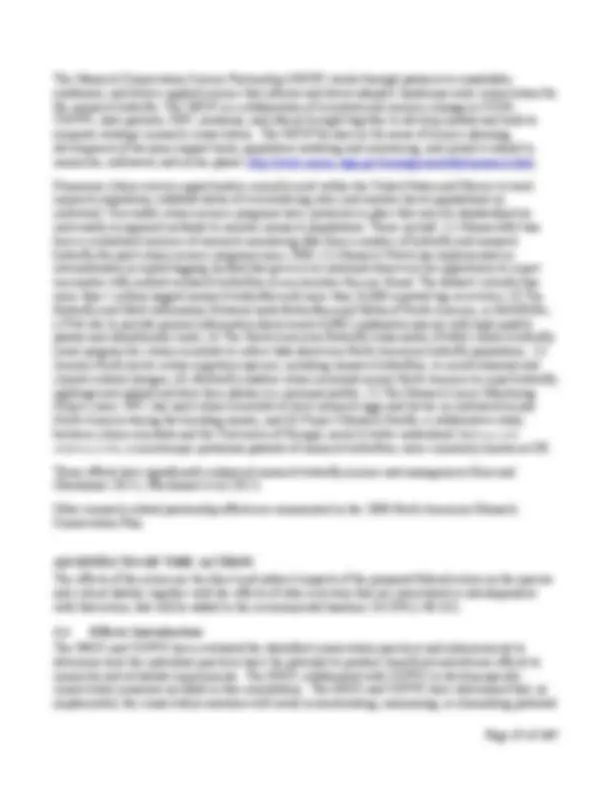
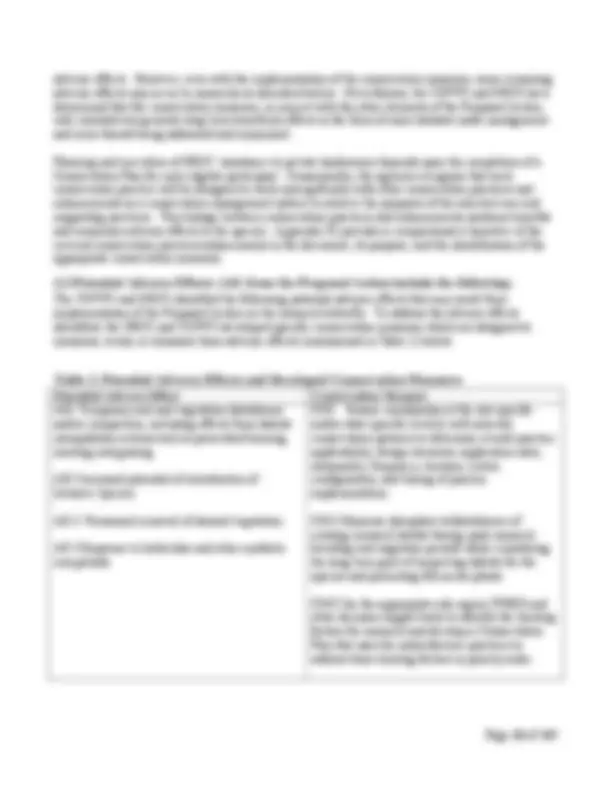
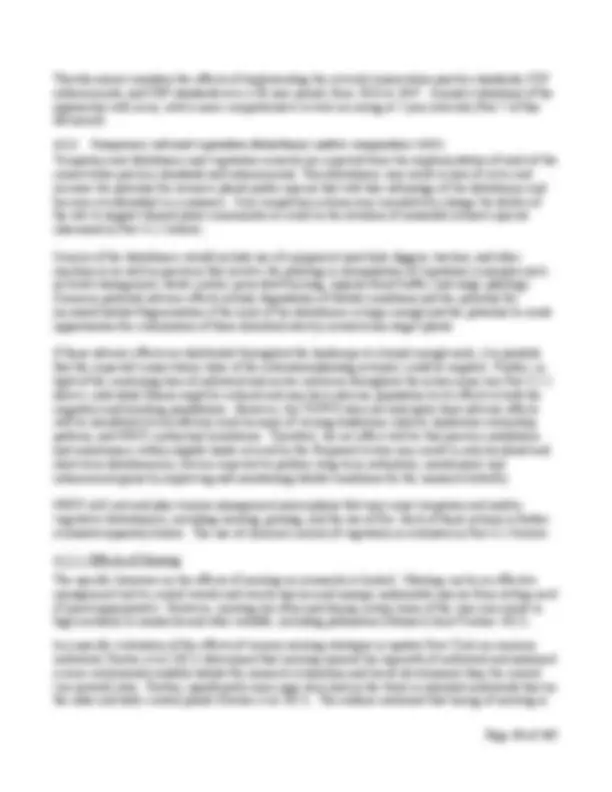
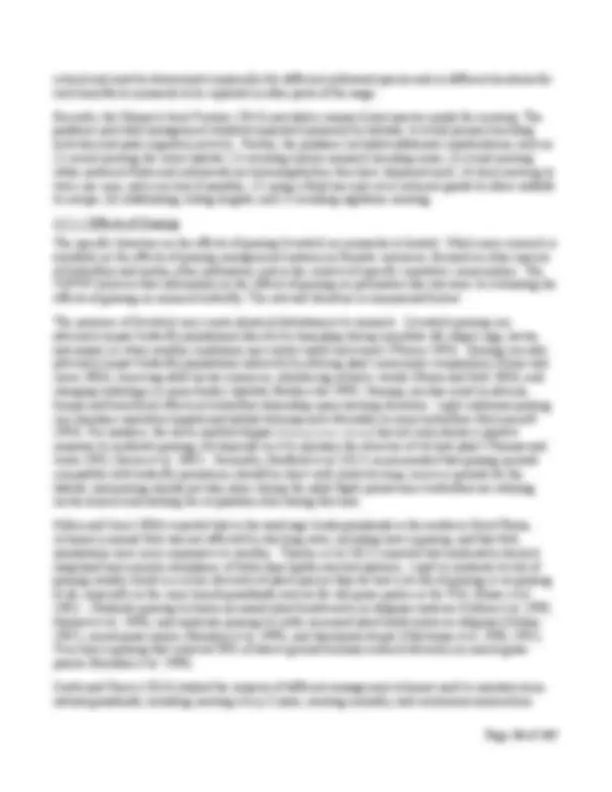
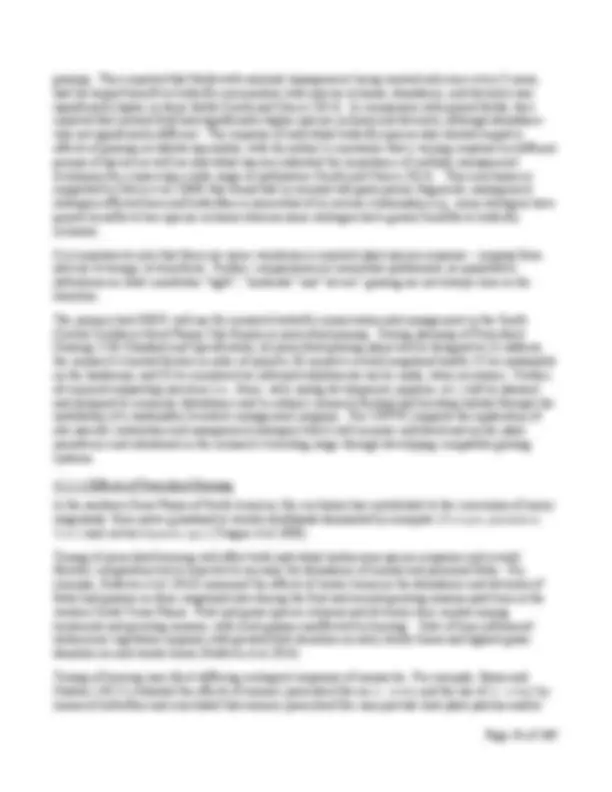
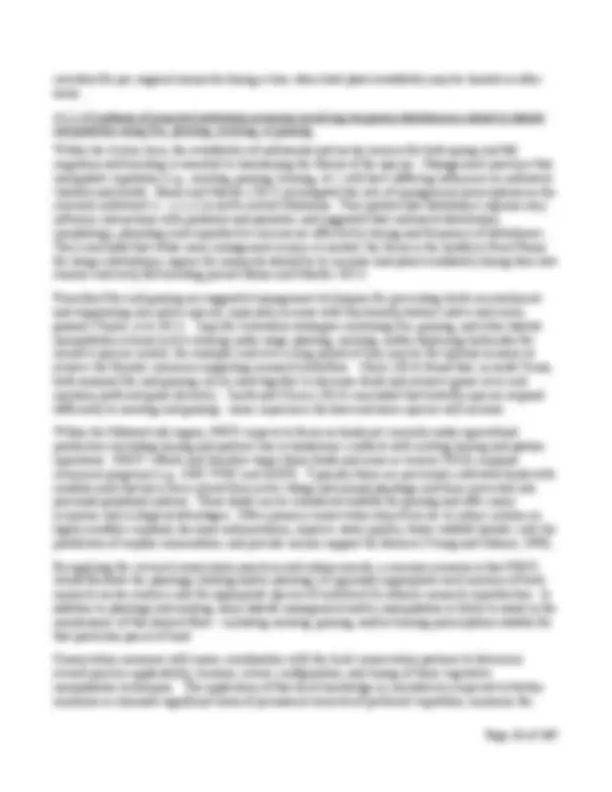
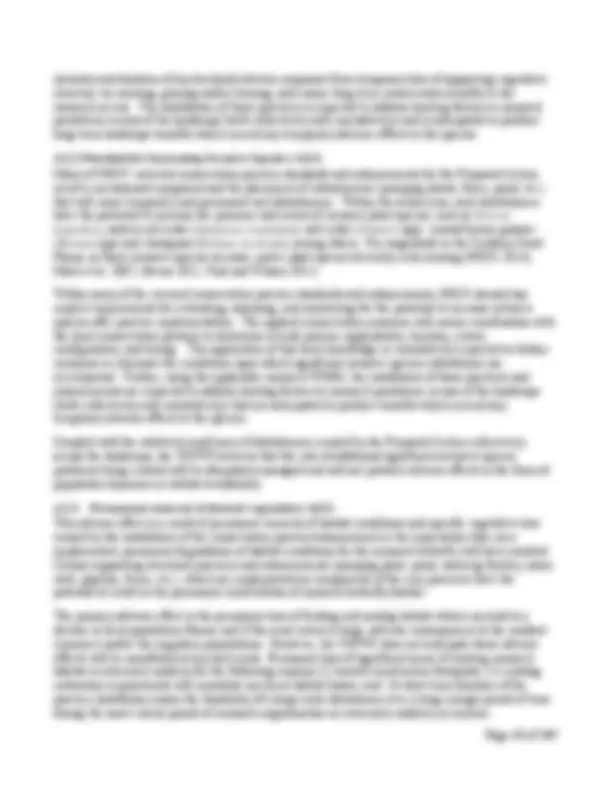

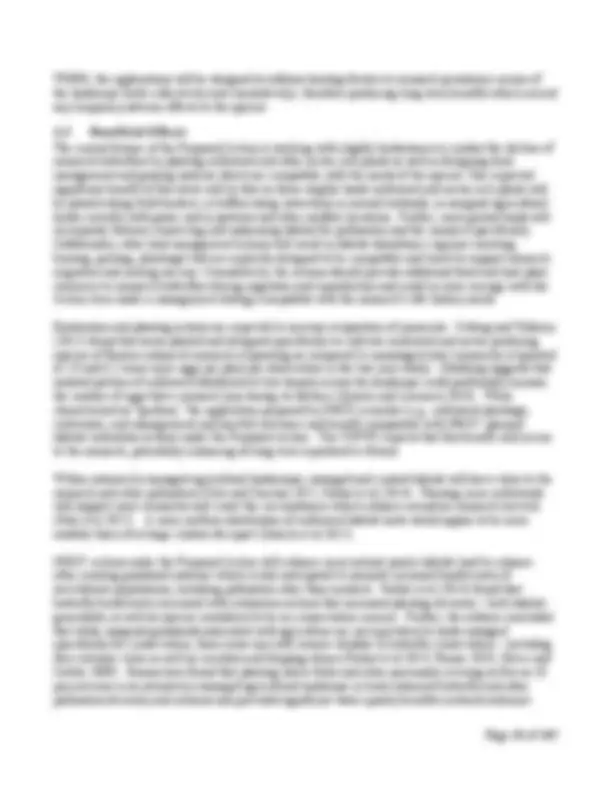
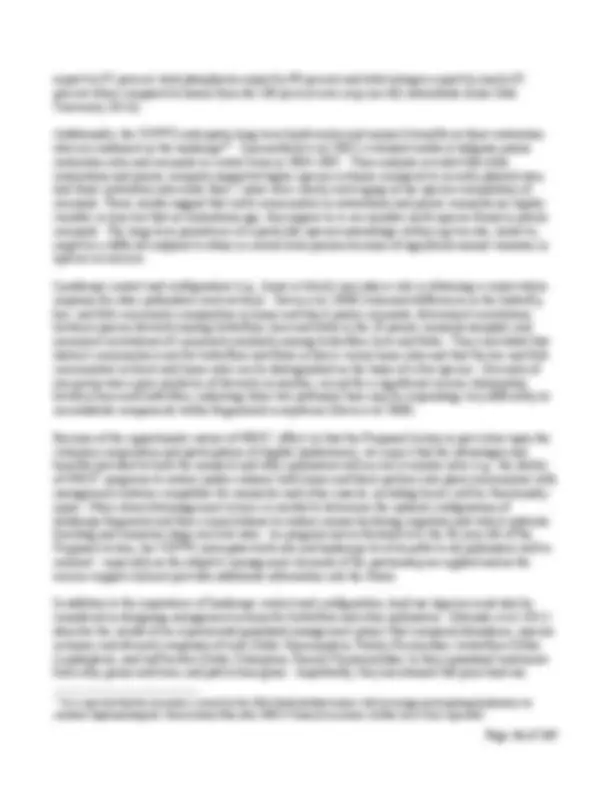
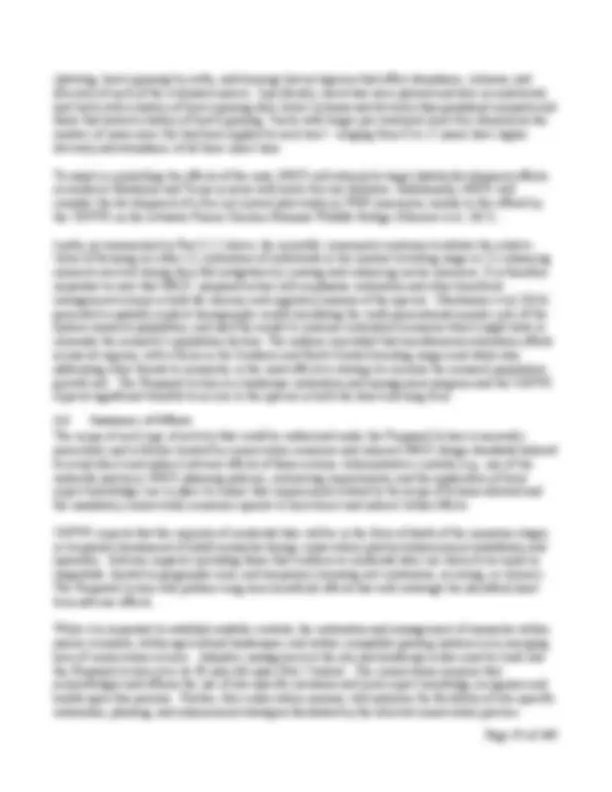
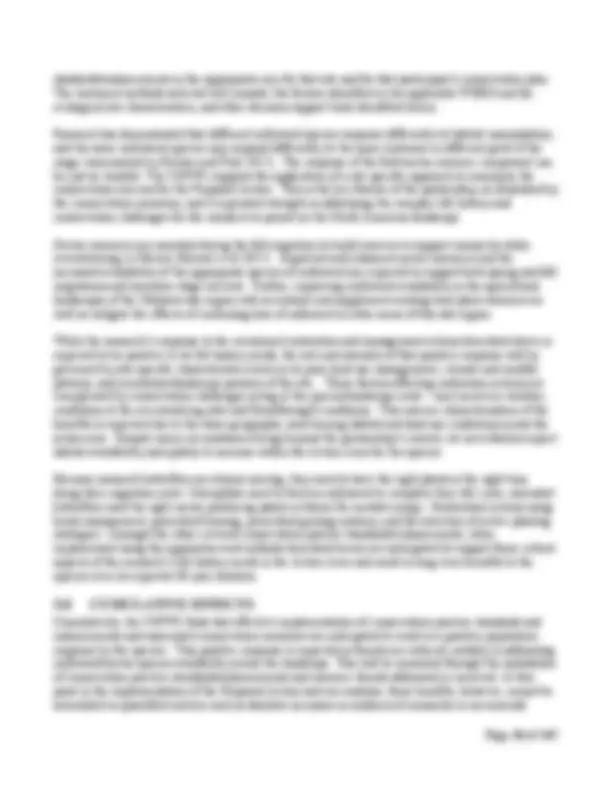
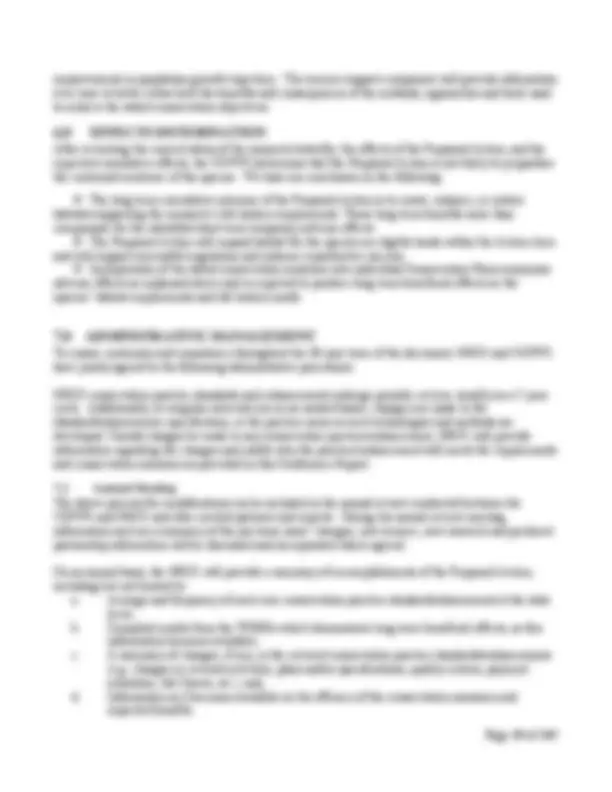
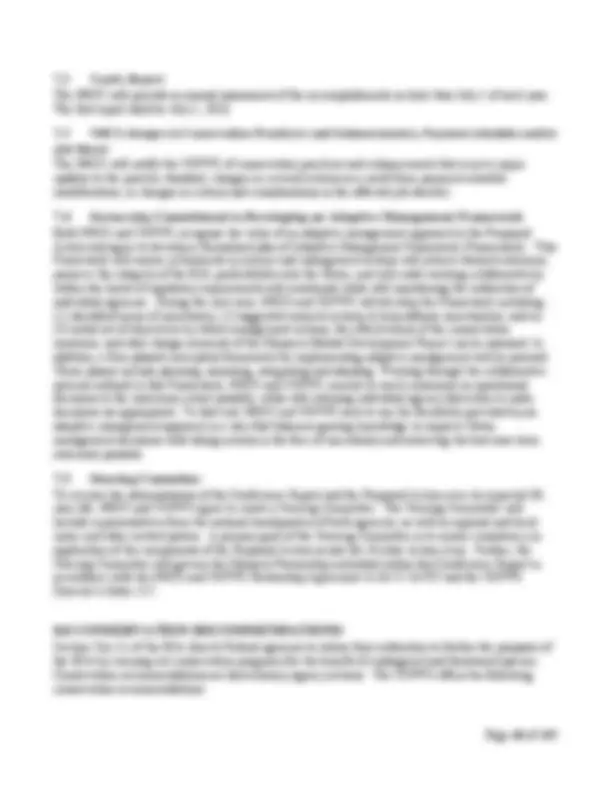
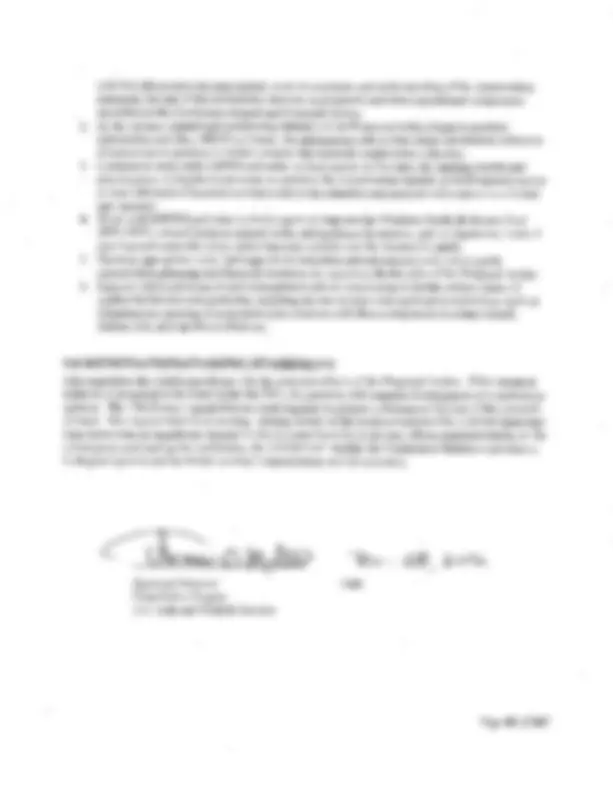
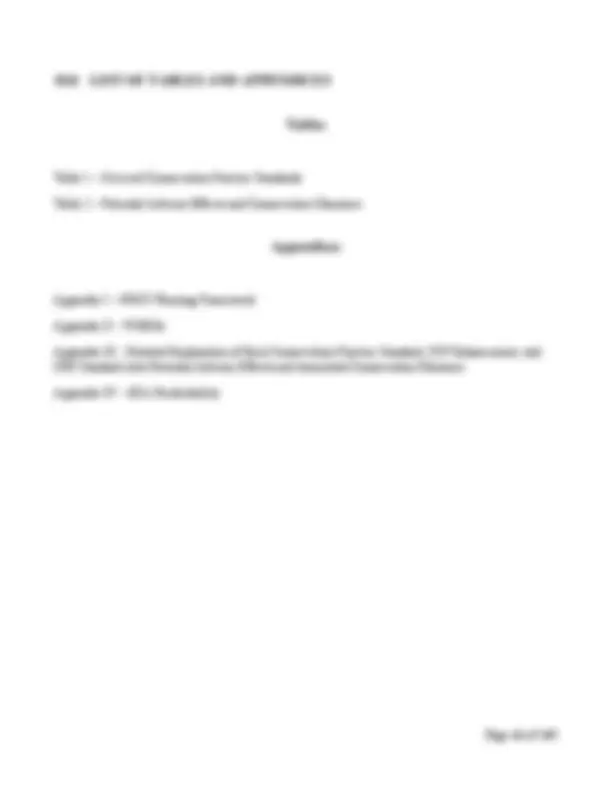
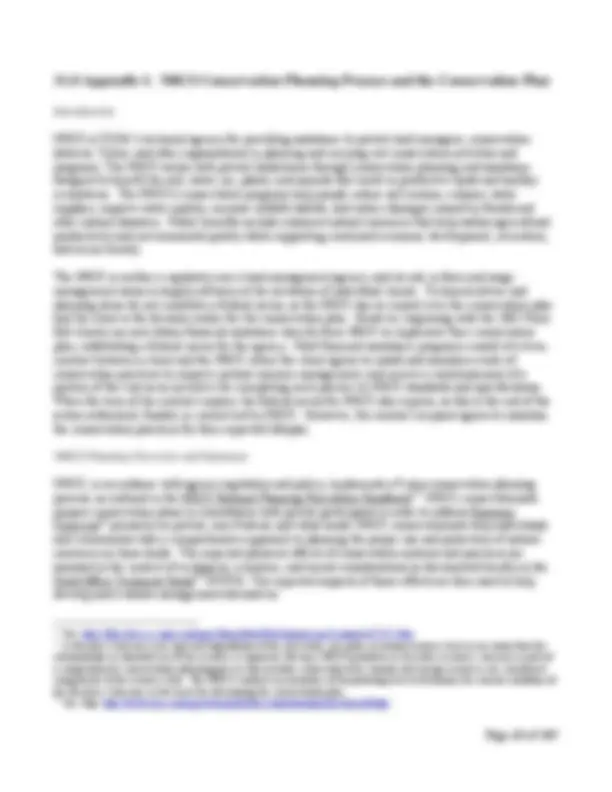
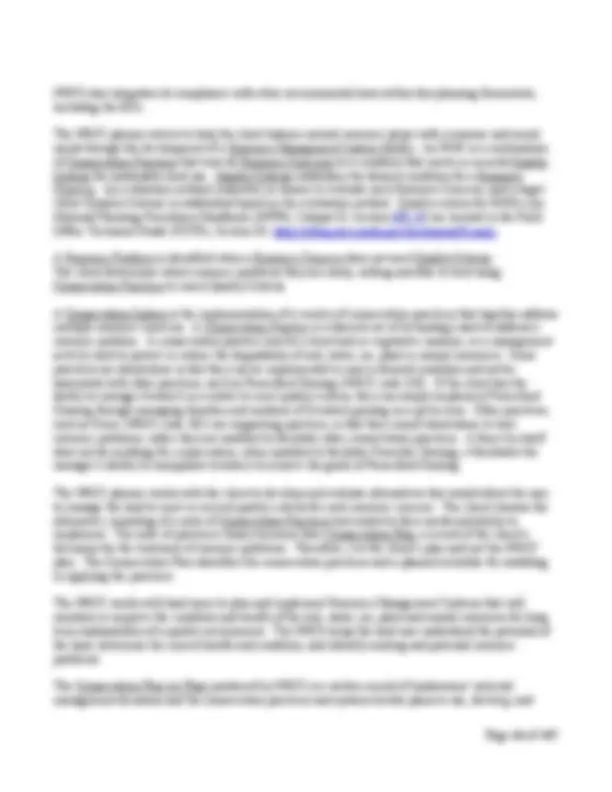
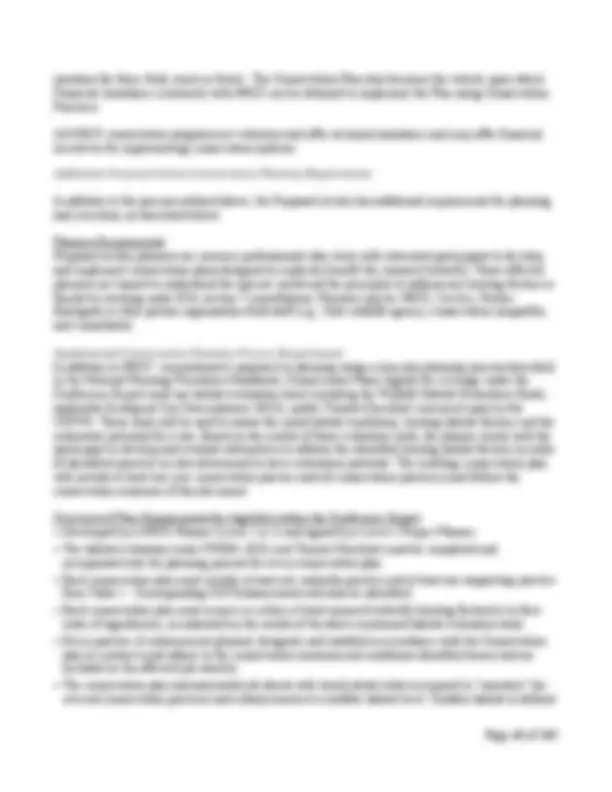
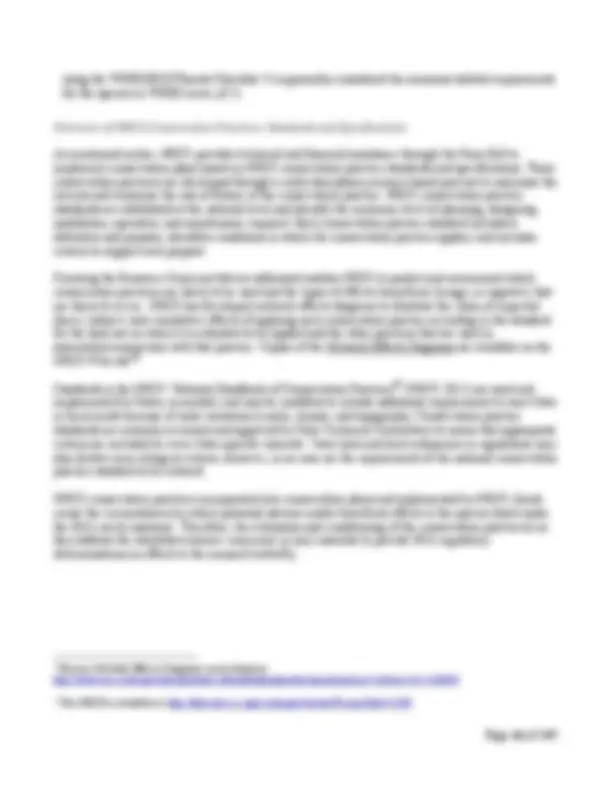

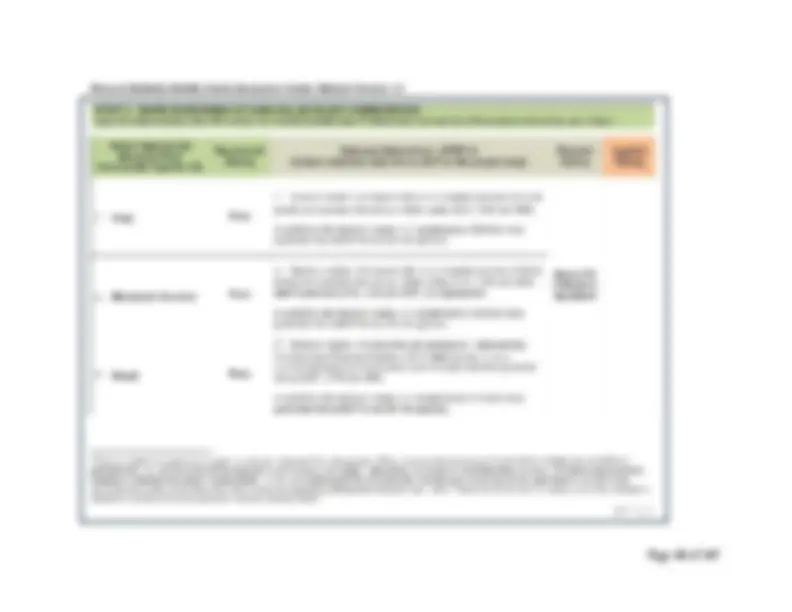
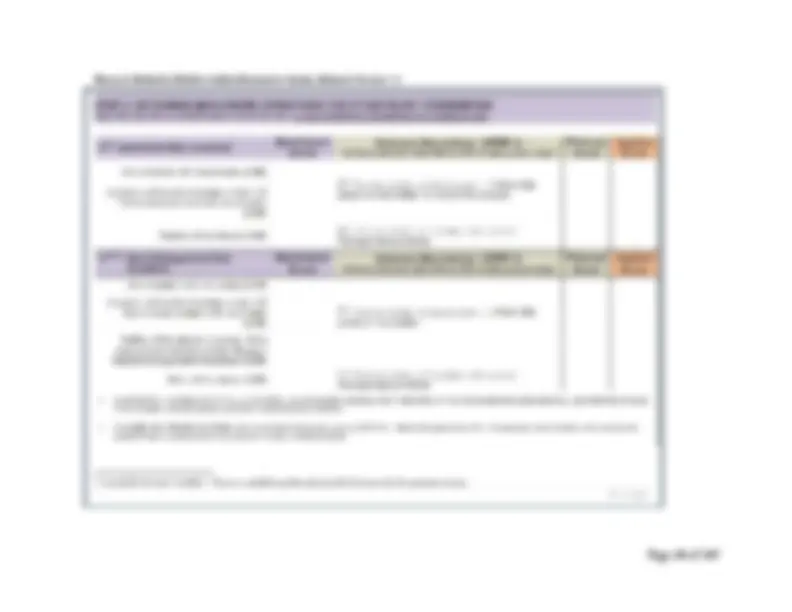
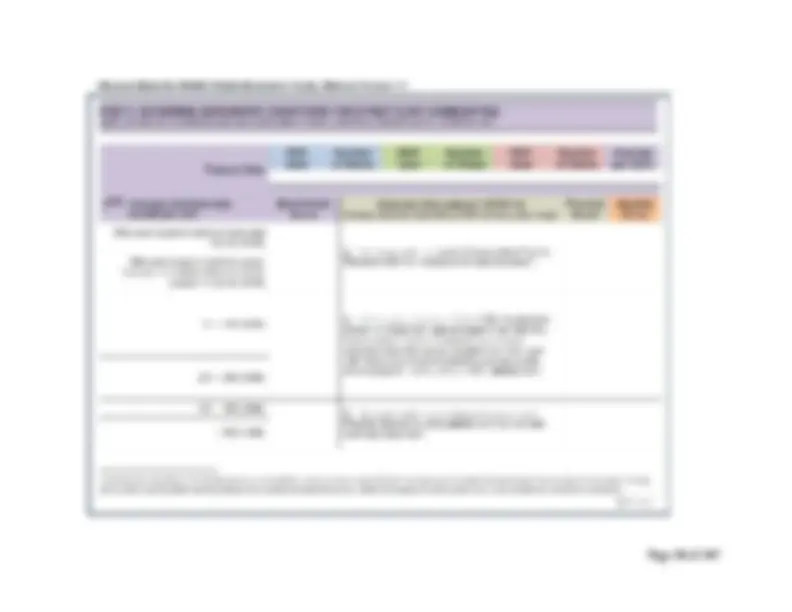
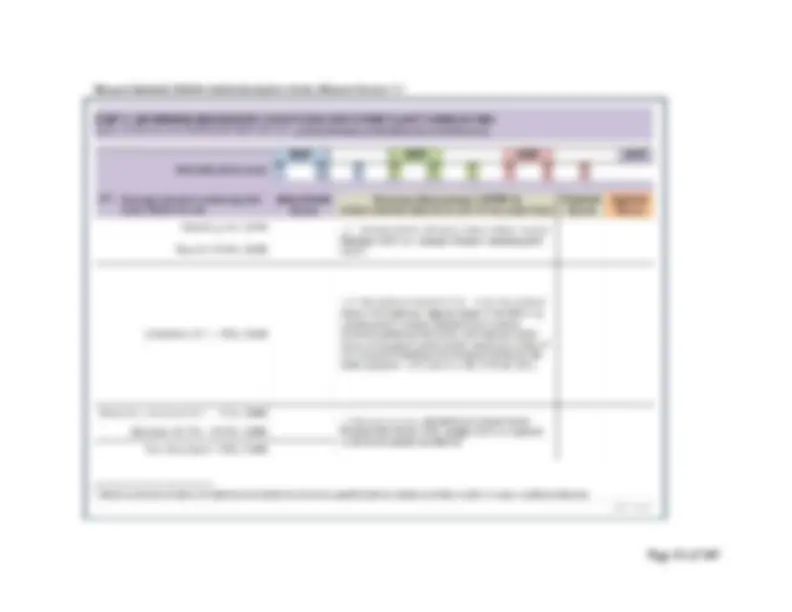
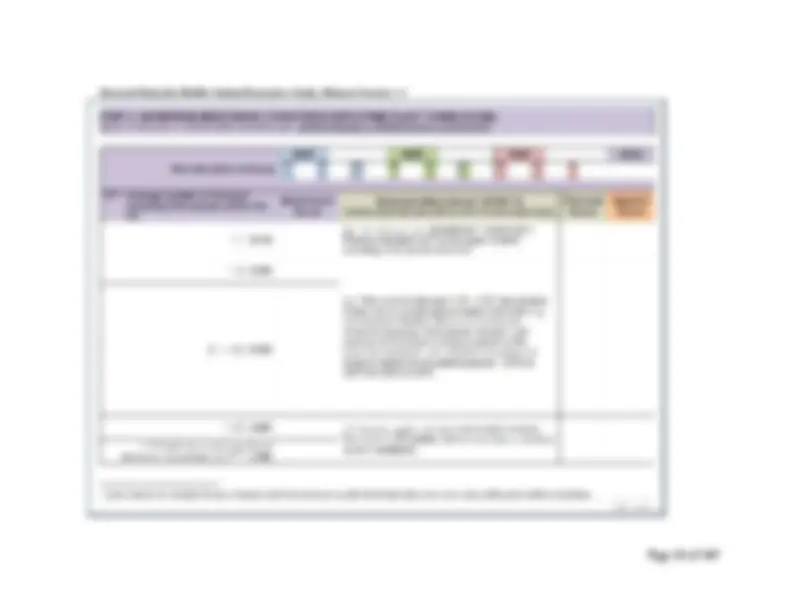
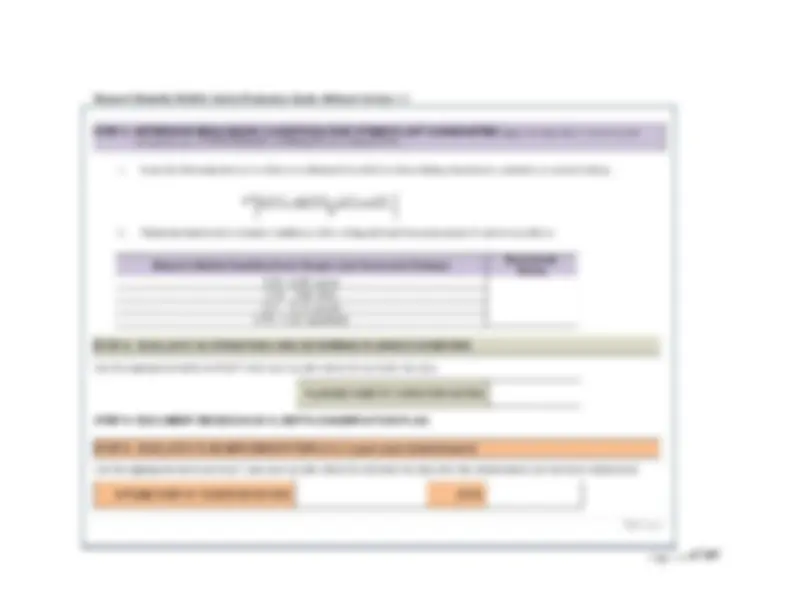
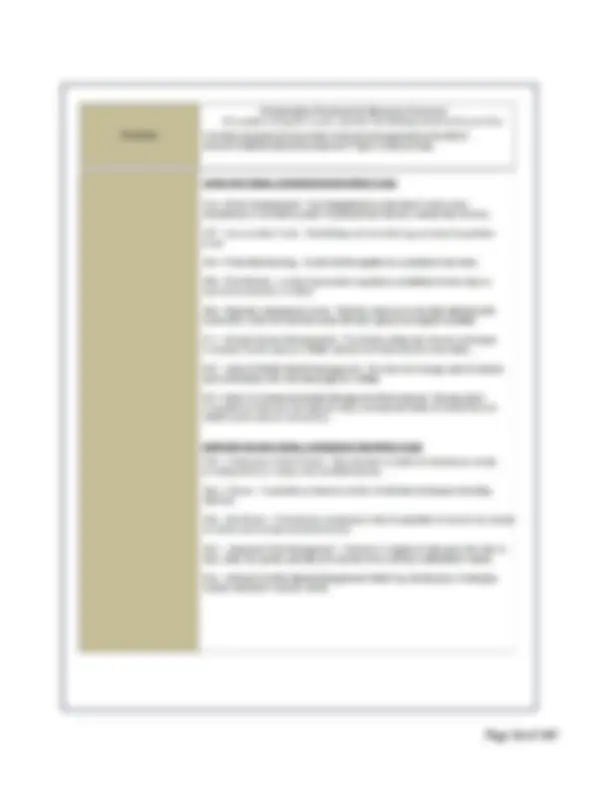
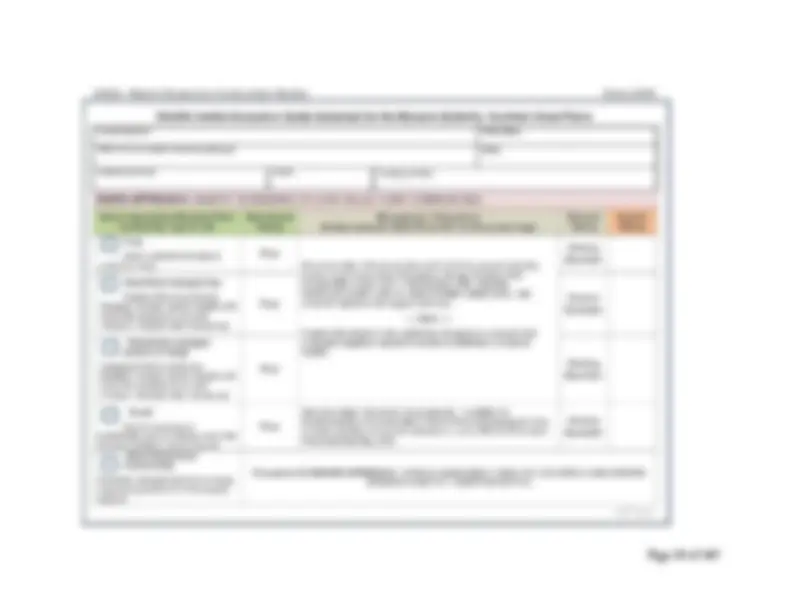
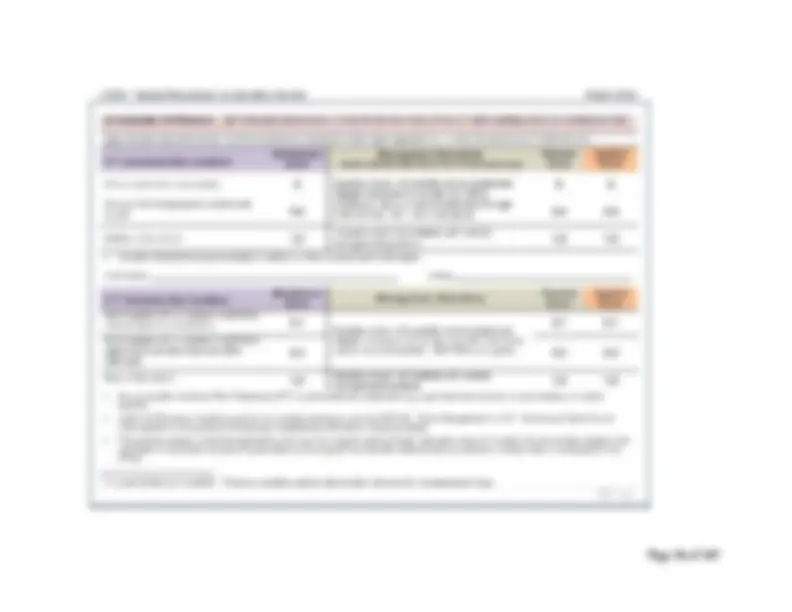
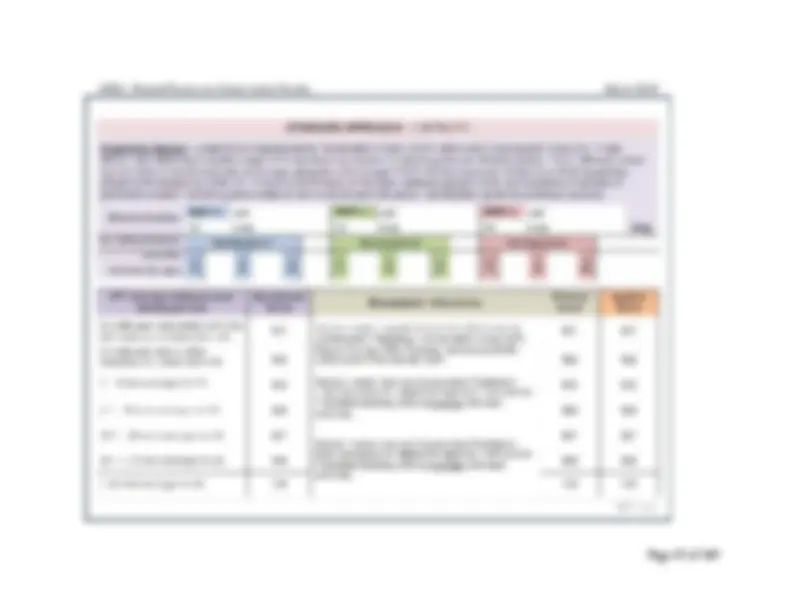
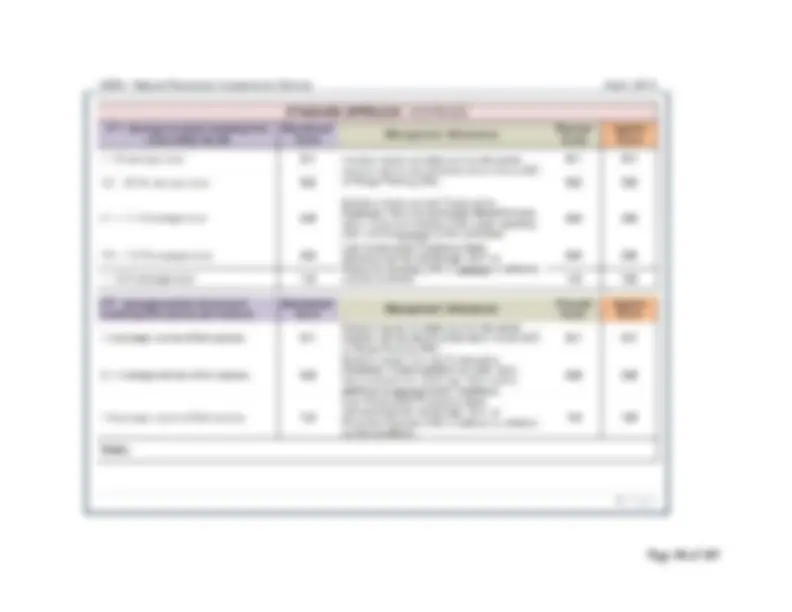
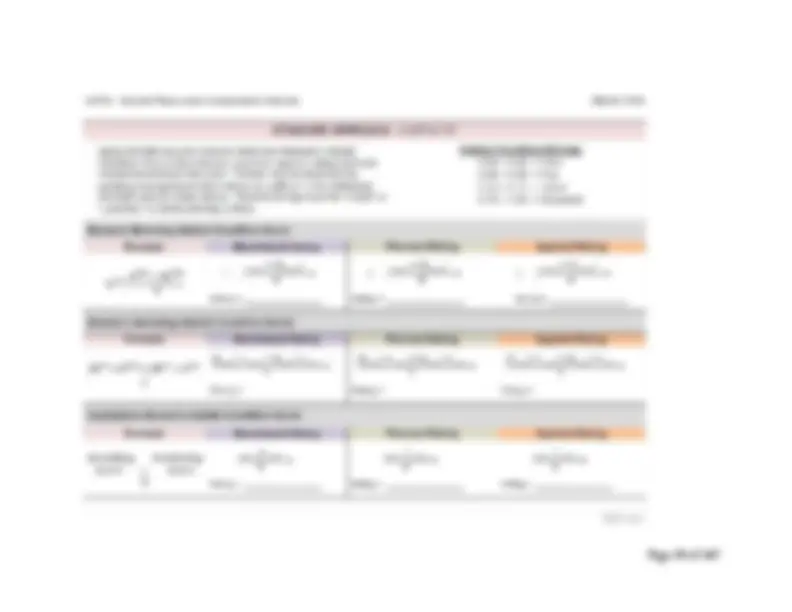
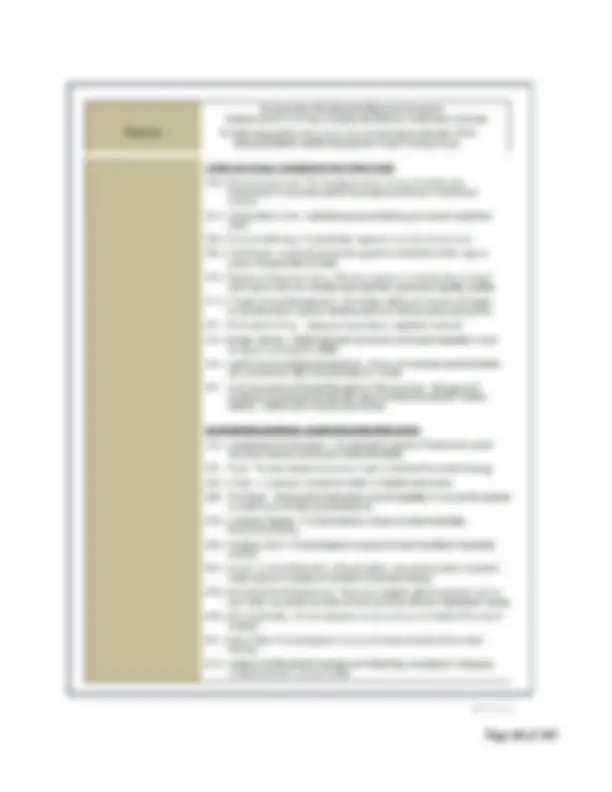
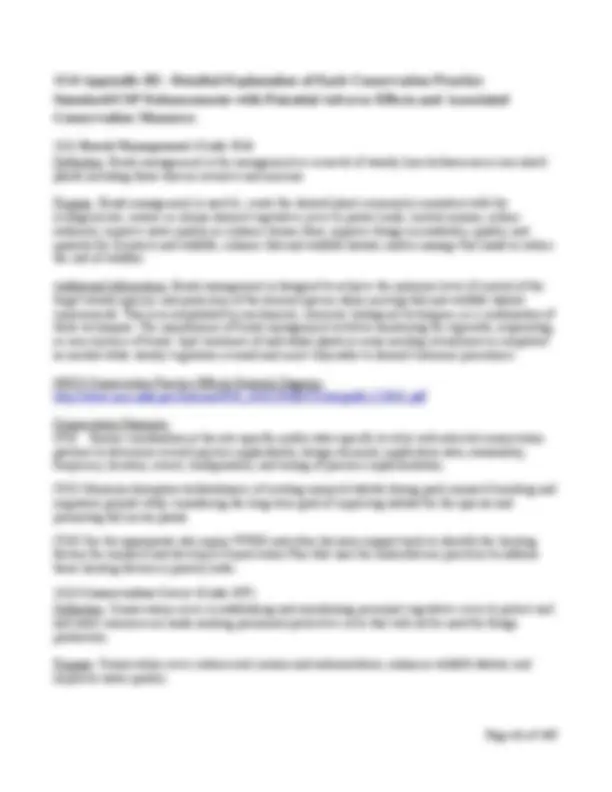
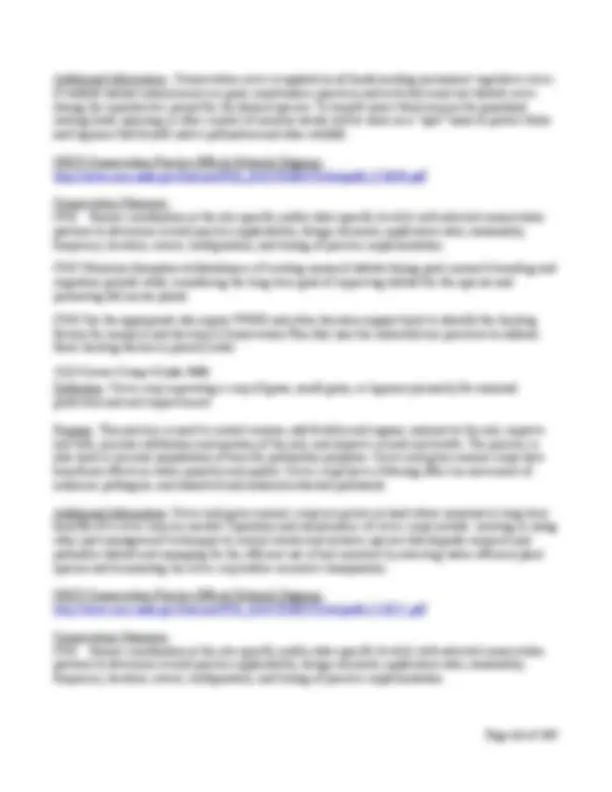
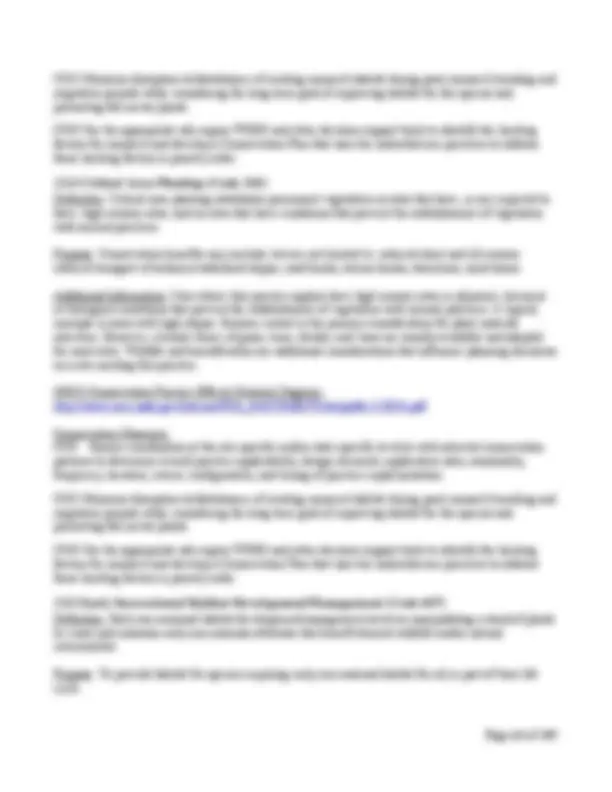
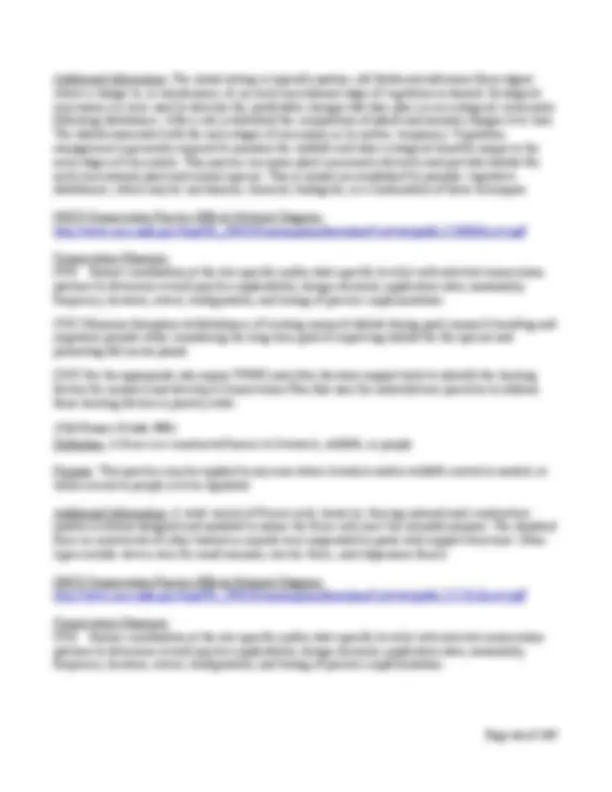
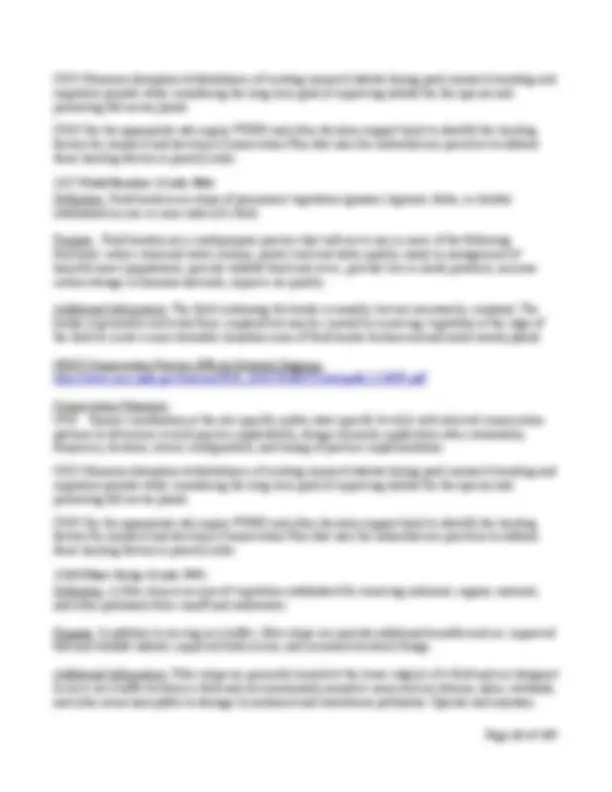
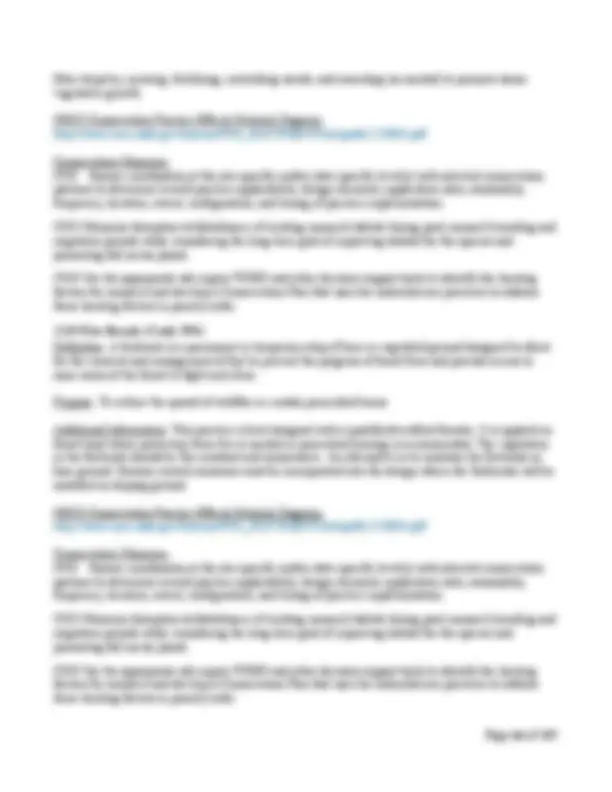
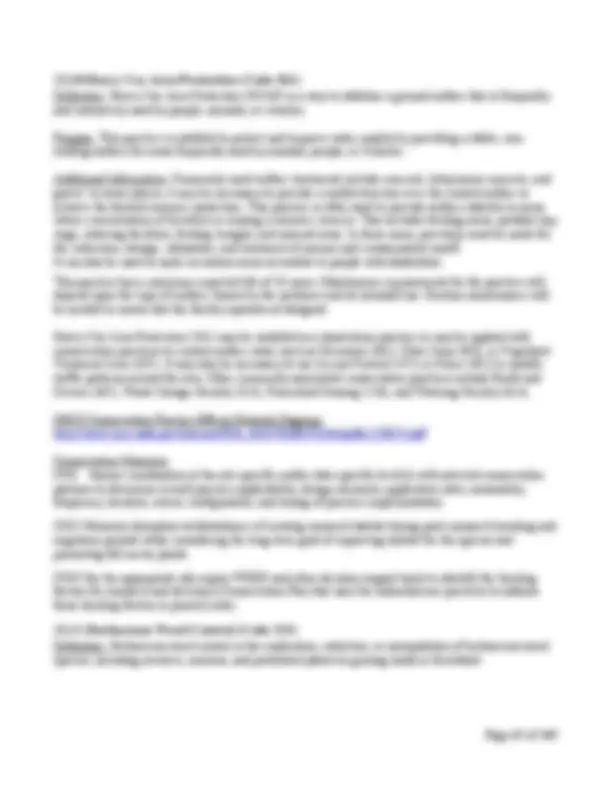
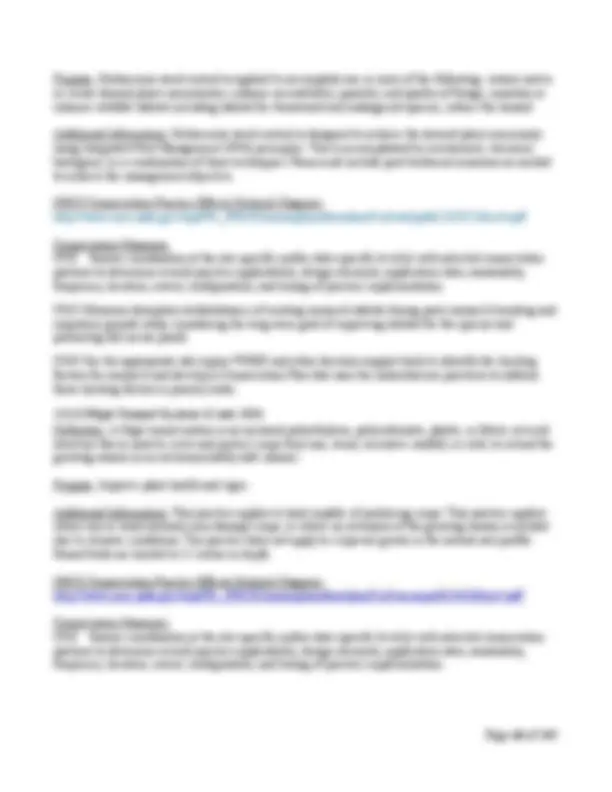
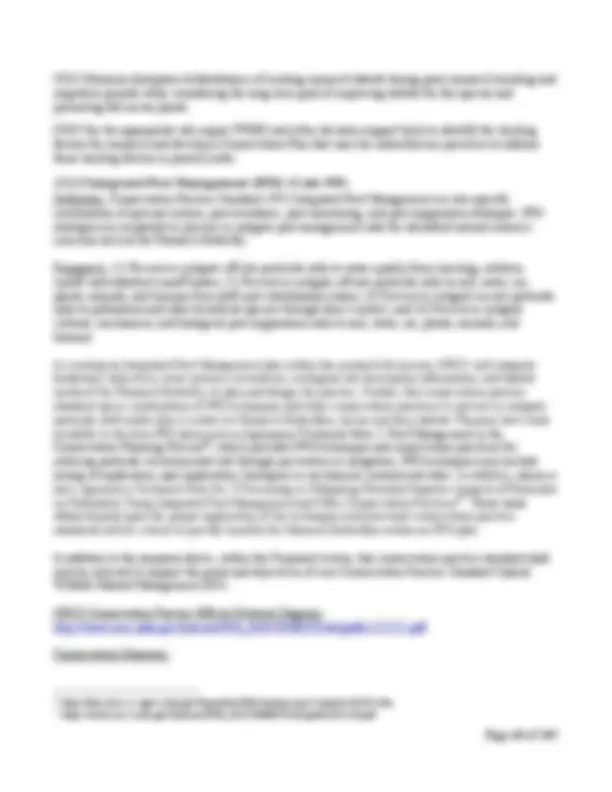
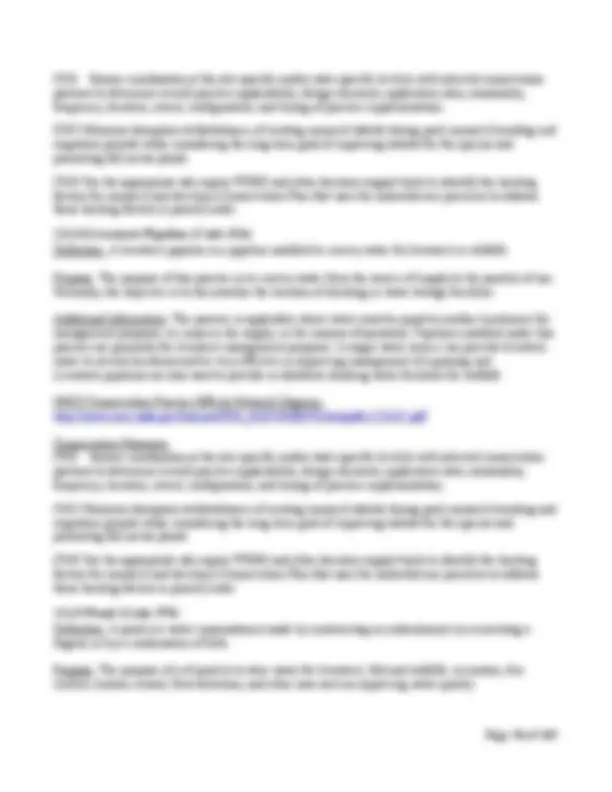
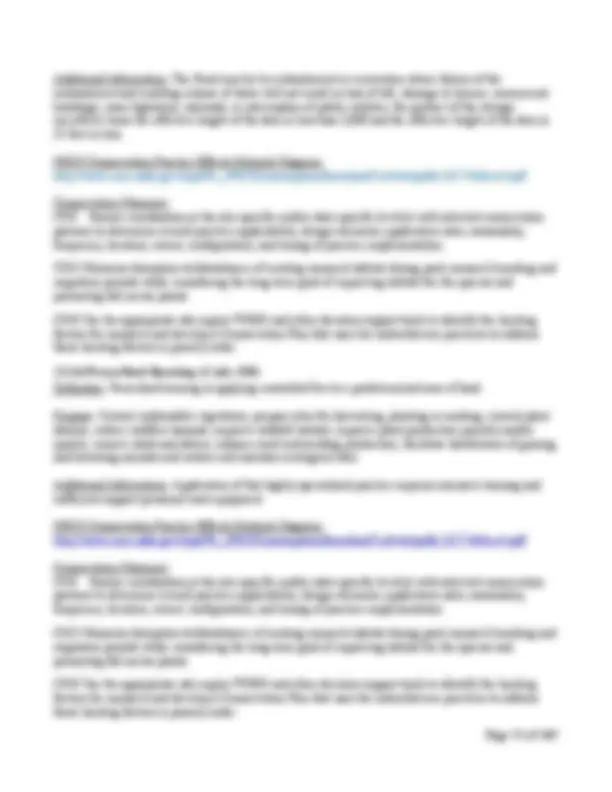
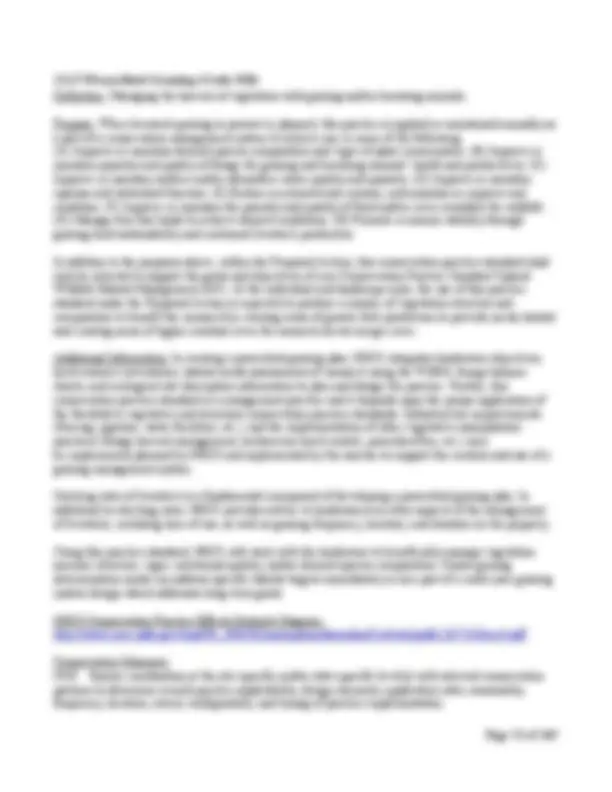
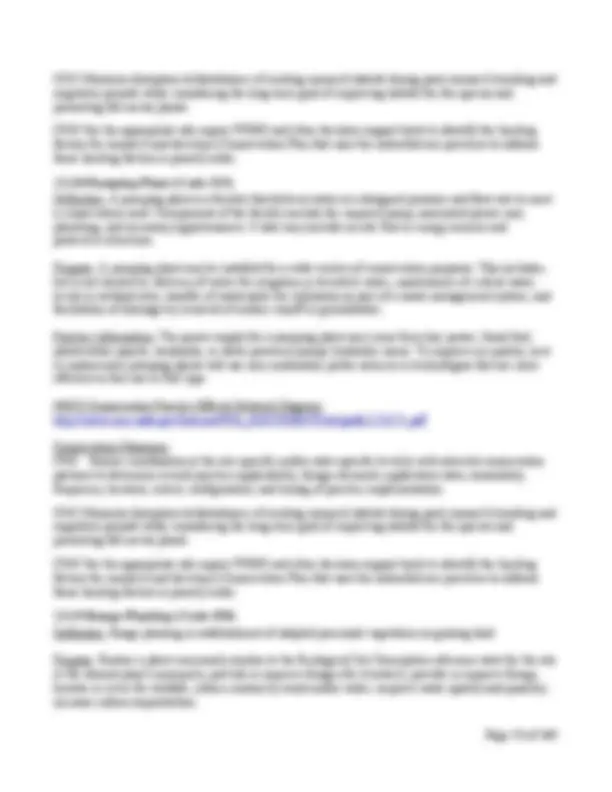
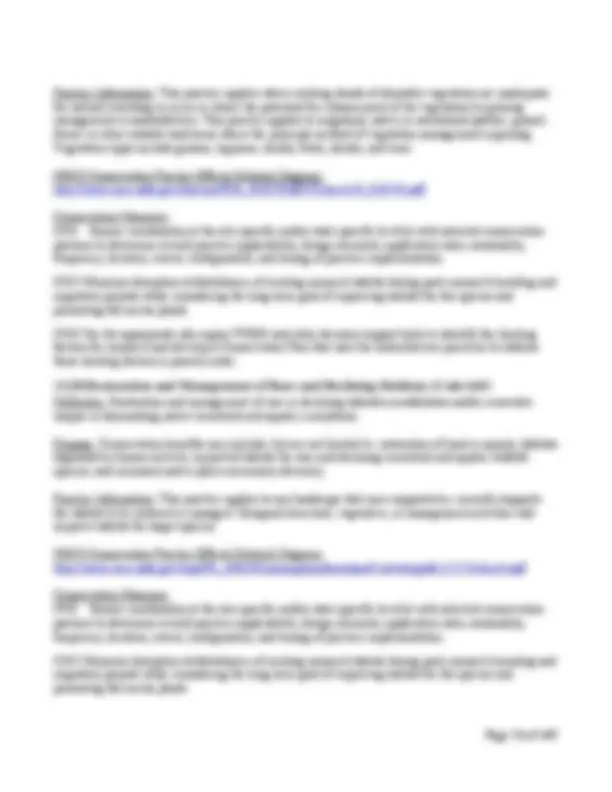
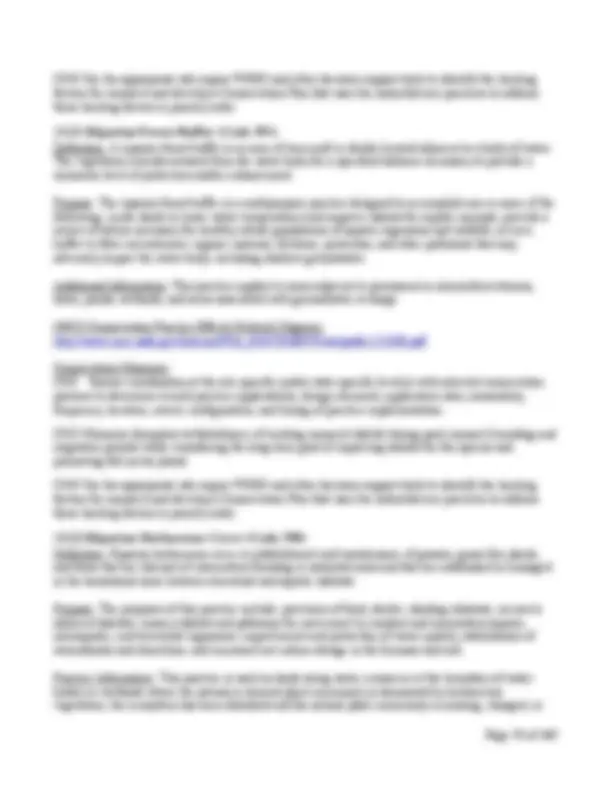
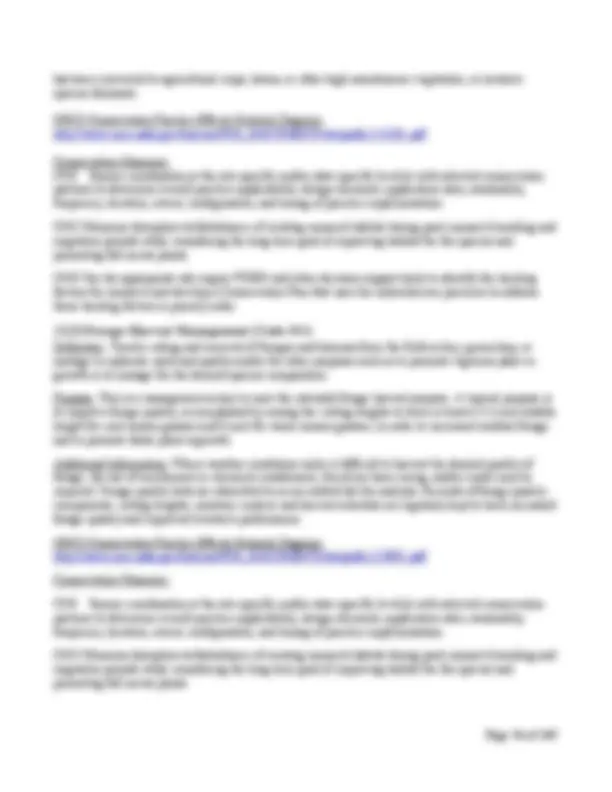
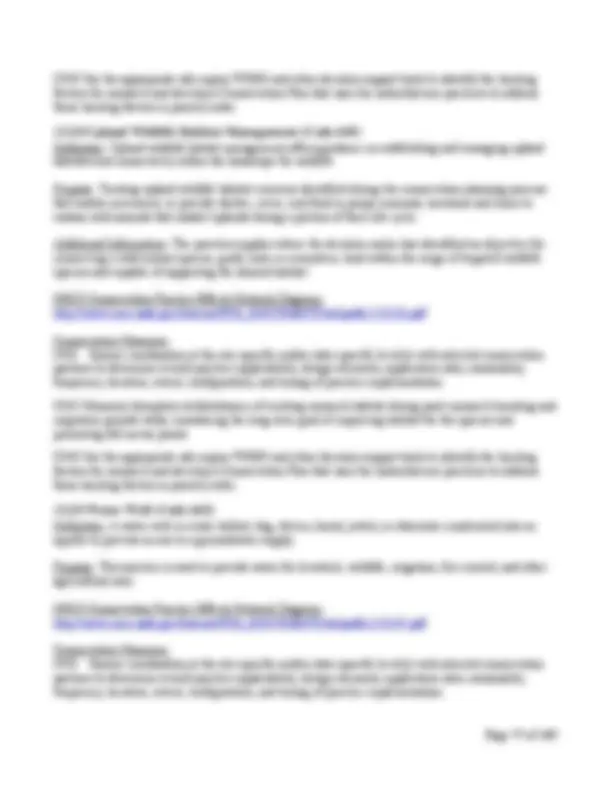
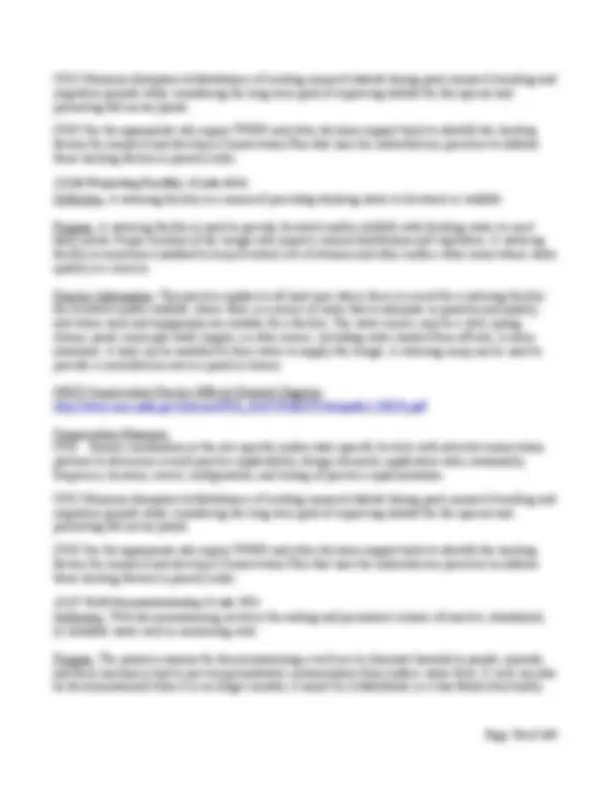
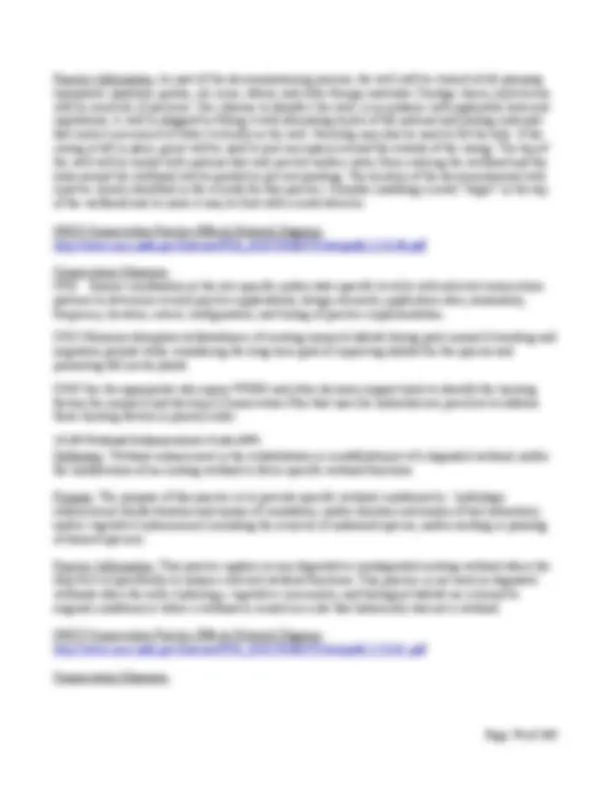
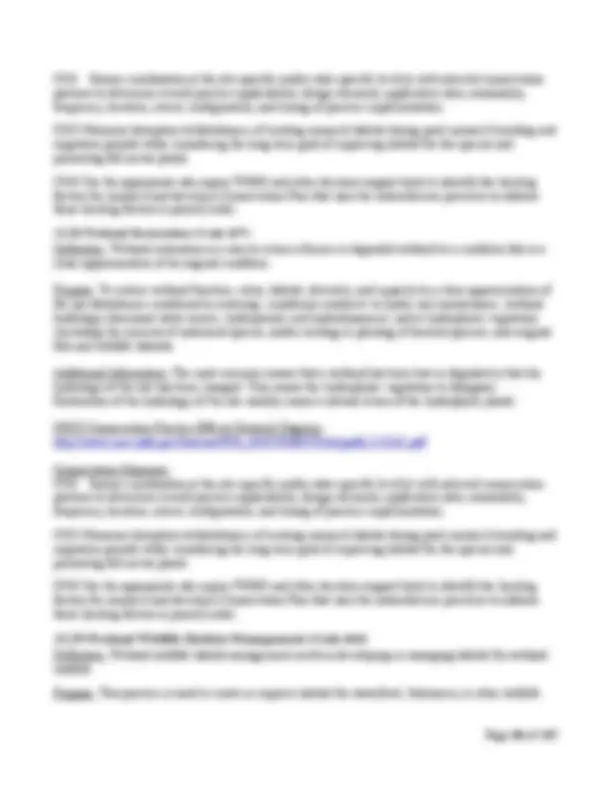
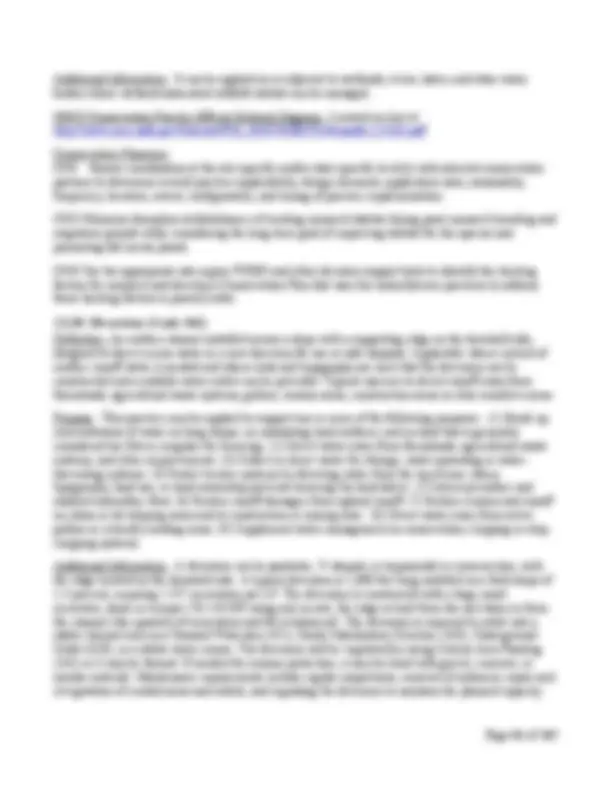
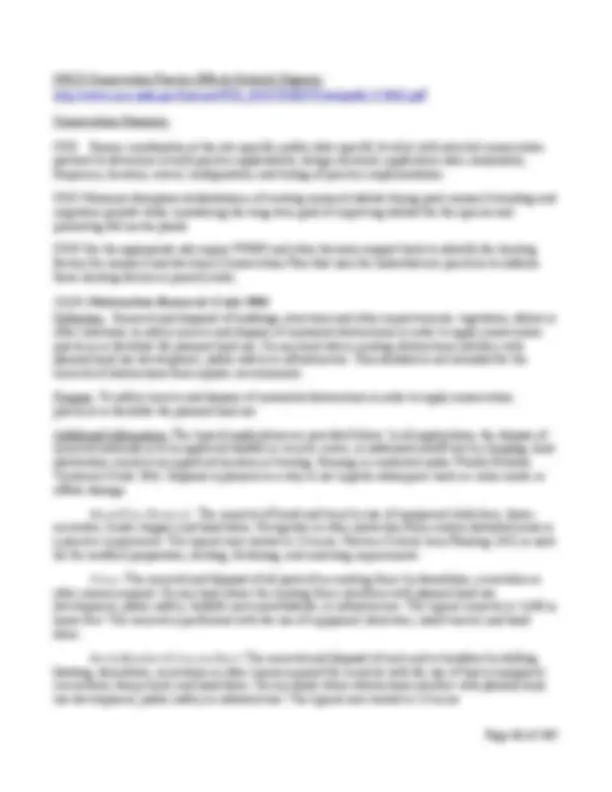
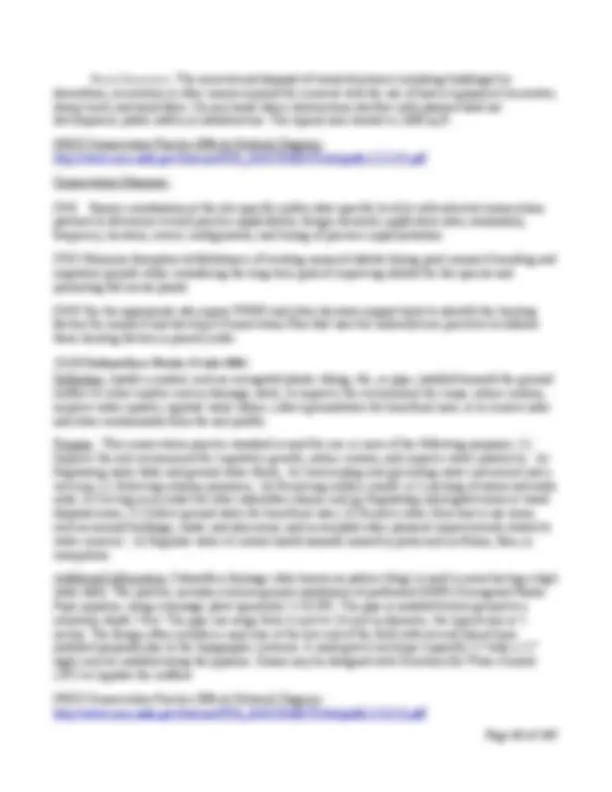
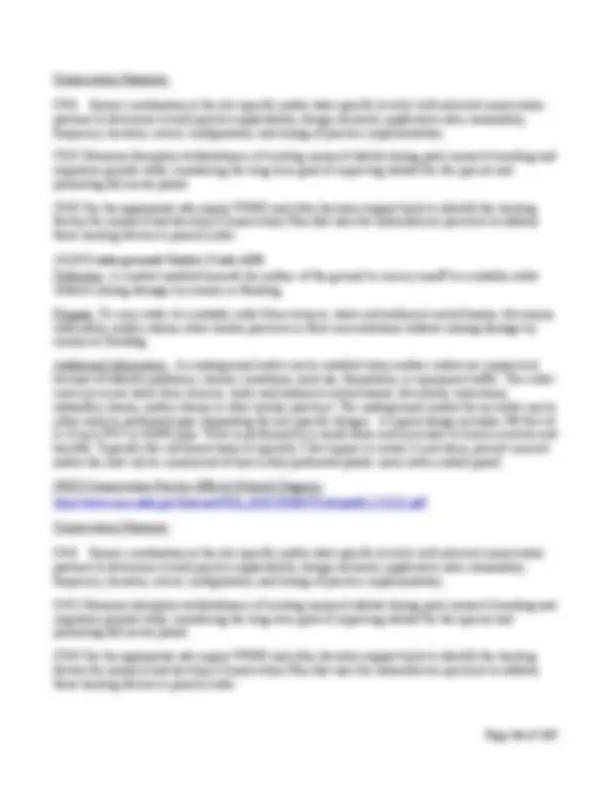
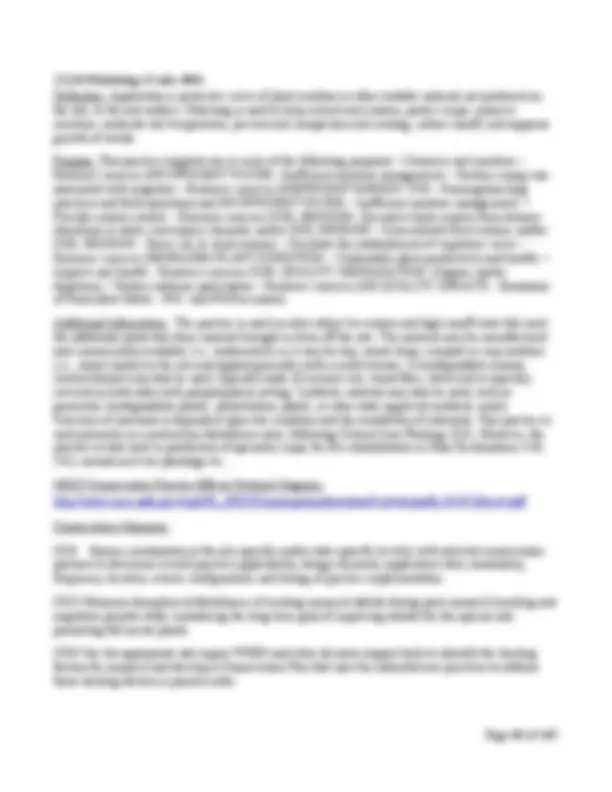
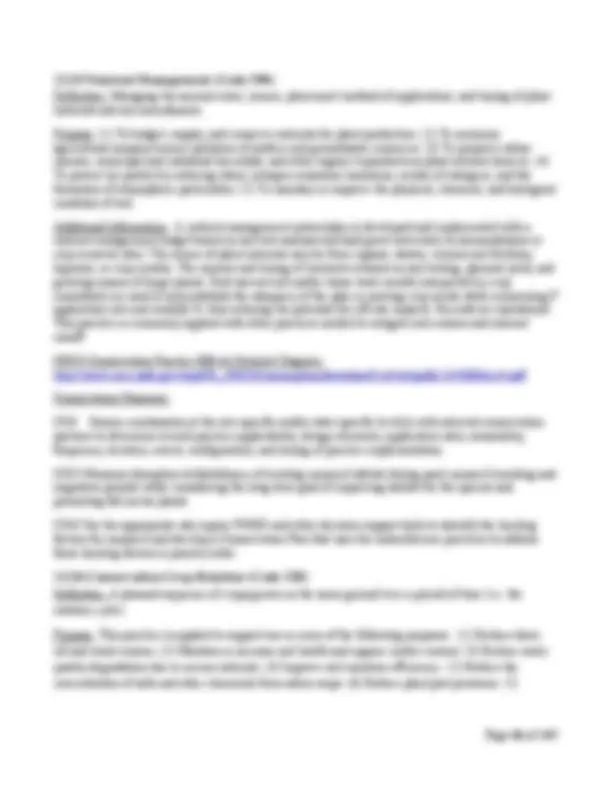
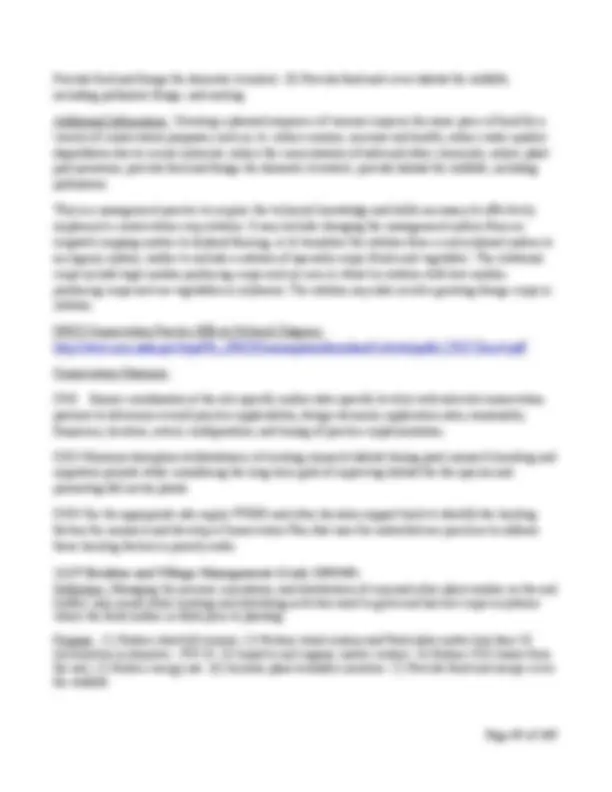

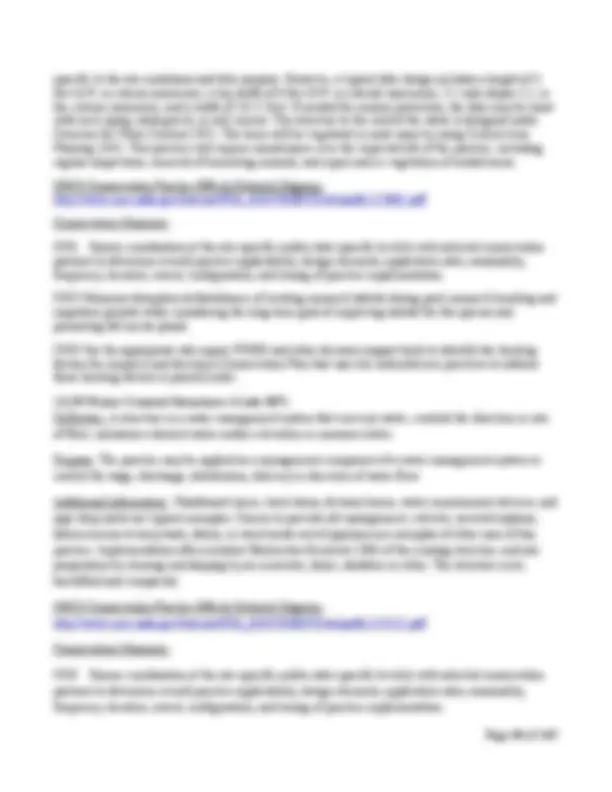
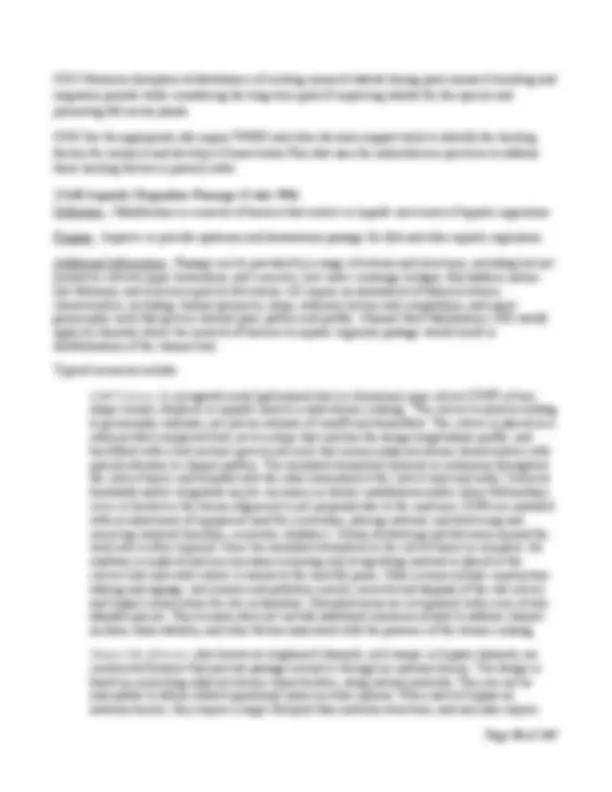
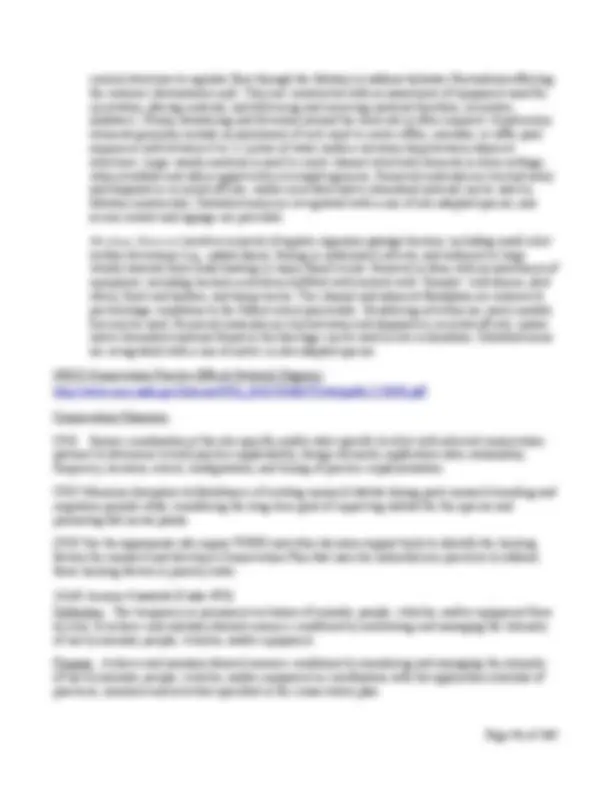
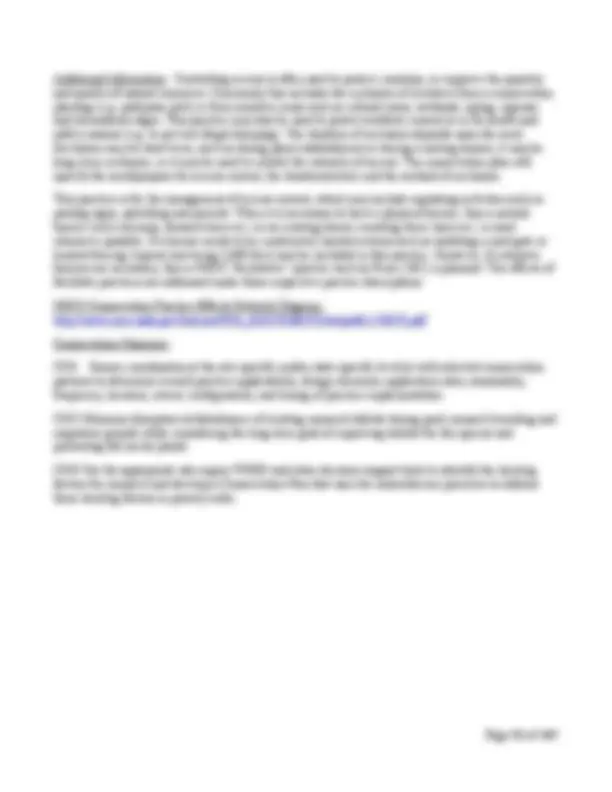





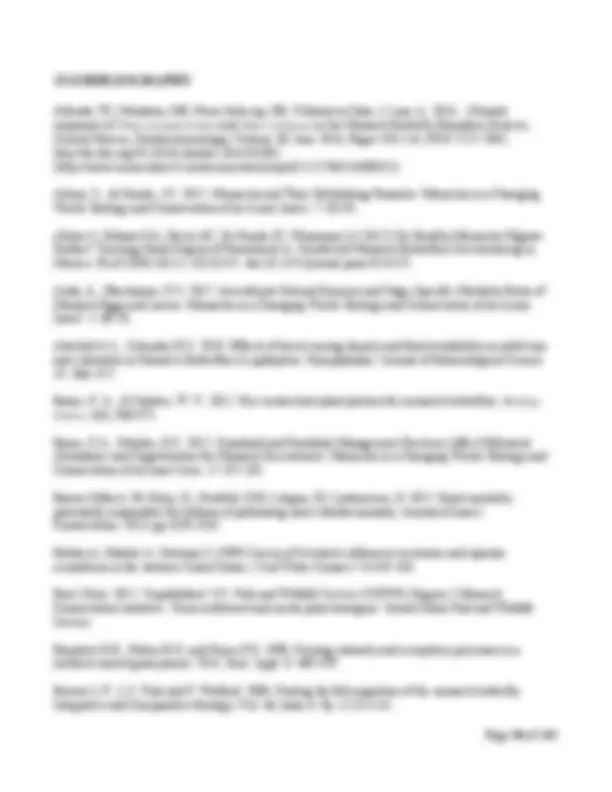
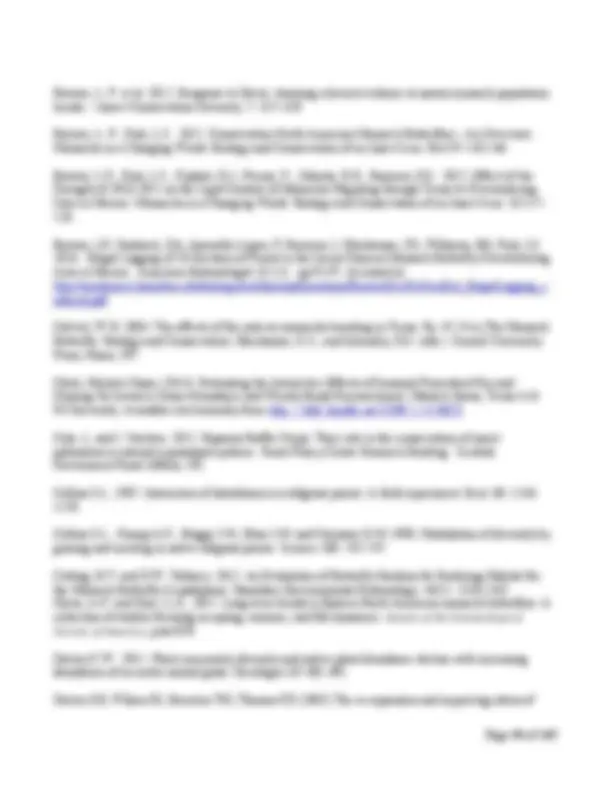
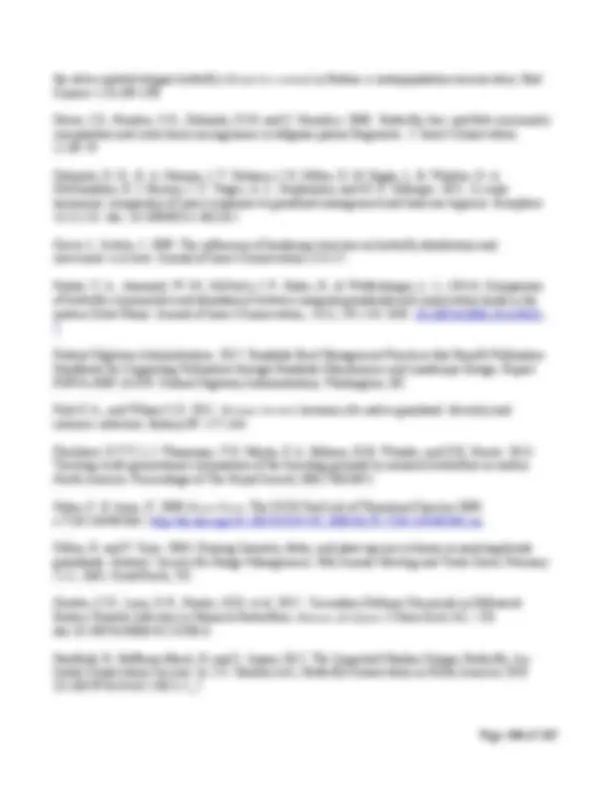


Study with the several resources on Docsity

Earn points by helping other students or get them with a premium plan


Prepare for your exams
Study with the several resources on Docsity

Earn points to download
Earn points by helping other students or get them with a premium plan
Community
Ask the community for help and clear up your study doubts
Discover the best universities in your country according to Docsity users
Free resources
Download our free guides on studying techniques, anxiety management strategies, and thesis advice from Docsity tutors
This document emphasizes the importance of minimizing disruption to monarch habitat during peak breeding and migration periods, while also considering the long-term goal of improving habitat and promoting fall nectar plants. Repeated throughout the document are instructions to minimize disruption and improve monarch habitat.
Typology: Study notes
1 / 107

This page cannot be seen from the preview
Don't miss anything!





























































































This document explains and describes a collaborative landscape level partnership between the Natural Resources Conservation Service (NRCS) and others – including the United States Fish and Wildlife Service (USFWS) - to benefit the Monarch Butterfly ( Danaus plexippus plexippus ). The primary focus of the partnership analyzed herein is the design and application of selected NRCS conservation practice standards and enhancements to benefit the Monarch Butterfly. These conservation practice standards and enhancements are applied by NRCS when providing technical and financial assistance to eligible landowners using its Farm Bill authorities.
It is important to note that the Proposed Action does not include NRCS actions that:
Result in the conversion of suitable Monarch butterfly habitat types to other land uses, including crop production; Involve the application of pesticides/herbicides other than to implement certain conservation practice standards and enhancements as described in this document to benefit the monarch butterfly, including but not limited to Integrated Pest Management (595) and Herbaceous Weed Control (315); Involve the construction or maintenance of existing/new public infrastructure such as bridges, reservoirs, roads or highways; and Involve commercial energy development or its associated infrastructure.
While the covered species, the Monarch Butterfly ( Danaus plexippus plexippus ) is not a protected species under the Endangered Species Act of 1973, as amended (ESA), NRCS would like to utilize the conference procedures available within the ESA’s section 7 consultation authorities to initiate conservation actions now for the Monarch butterfly and thereby receive ESA predictability should the monarch butterfly be listed. Part 2.3.8 provides a detailed explanation on the ESA predictability component of this Conference Report.
Use of the conference procedures is only required when a Federal agency proposes an activity that is likely to jeopardize the continued existence of a species that has been proposed for listing under the ESA or the proposed activity is likely to destroy or adversely modify proposed critical habitat (see 50 CFR 402.10). Preparation of “Conference Report” is recommended when a proposed Federal action may affect a proposed or candidate species but the action is not likely to jeopardize the continued existence of a proposed or candidate species. (Refer to Chapter 6 of the USFWS Consultation Handbook). In this situation, the conference procedures are being used to assist a Federal agency in planning a proposed action to conserve a species not yet proposed for listing or determined to be a candidate for listing. The conference process is designed to assist the Federal agency in identifying and resolving potential conflicts at an early stage in the planning process. During the conference, the USFWS may provide advisory recommendations on ways to minimize or avoid adverse effects and to identify beneficial actions. The conclusions reached during a conference are to be documented by the USFWS and provided to the action agency in a document whose organization, content, and magnitude is expected to vary based on the complexity of the conference (50 CFR 402.10(e)).
Therefore, and at NRCS’ request, this Report contains the USFWS’ analysis of the expected adverse, benign, and beneficial effects likely to result from implementation of the Proposed Action within the Action Area (see Figure 1). Overall effective implementation of the Proposed Action described in this
monarch’s primary migratory flyway and breeding areas – the Midwest and Southern Great Plains (Figure 1). For each of these sub-regions, NRCS developed a Habitat Strategy (see section 2.3.2.1 and 2.3.2.2) for additional information.
Generally, the Midwest Habitat Strategy is focused on plantings of milkweed ( Asclepias spp.) and monarch nectaring forbs in wetlands and other marginal lands. In the southern Great Plains Habitat Strategy, the effort is focused on improving monarch butterfly habitat on existing grasslands.
Both NRCS and USFWS anticipate that work products (including the management actions, applied conservation practice standards and enhancements as conditioned by the conservation measures, specific decision support tools, etc.) generated as part of this partnership will facilitate future NRCS-USFWS efforts in other areas (e.g. beyond the current Action Area) of the monarch’s range in the lower 48 states and may prove useful for other monarch butterfly conservation efforts outside of the scope of this NRCS-USFWS partnership (see Part 3.2.4), such as NRCS technical assistance administered through the Farm Service Agency’s Conservation Reserve Program.
The duration of the proposed action is 30-years (2016-2047), with opportunities to improve implementation of the Proposed Action annually and review of the its outcomes and effects at five year intervals.
The “Action Area” is defined as “all areas to be affected directly or indirectly by the Federal action and not merely the immediate area involved in the action.” (50 CFR 402.02). The geographic scope of the Proposed Action will initially focus on 10 priority states (Indiana, Illinois, Iowa, Kansas, Minnesota, Missouri, Ohio, Oklahoma, Texas, and Wisconsin) (Figure 1 below).
Modifications to the initial geographic scope are expected and anticipated over the 30-year life of the Proposed Action and associated USFW-NRCS partnership. Any expansion of the geographic scope will require the development of appropriate landscape level targeting and assessment tools (WHEGs, planting lists, etc.) to ensure that the long-term goals of the Proposed Action are being achieved. This process will be done in collaboration with the USFWS and other invited conservation partners (Part 7. below).
The implementation of the Proposed Action involves the following elements: (1) A Landscape and Targeted Focus; (2) Use of selected NRCS Conservation Practices and Enhancements (including core and supporting practices); (3) Application of the best science to support creating desired habitat conditions; (4) Incorporation of jointly developed conservation measures; (5) A science supported monitoring and assessment element; (6) Staff and partnership training and involvement; and (7) ESA predictability to eligible and participating landowners. Each of these implementation elements is discussed in detail below.
2.3.1 A Landscape and Targeted Focus The Proposed Action is structured to facilitate landscape-level improvements across the species’ range while recognizing that threats and conservation opportunities may differ geographically within the Action Area. Close collaboration of many stakeholders, including local, State, and Federal agencies,
and NGOs, will ensure that NRCS activities complement efforts already underway. The implementation of the Proposed Action is integrated into the daily operations of NRCS’ existing Farm Bill authorities. As part of the scope of the consultation, it is therefore important for the reader to understand the NRCS’ existing Conservation Planning processes and component elements that will be used to implement the Proposed Action^1.
USFWS has identified the migratory corridor from Texas to the upper Midwest as a key region for monarch habitat efforts (USFWS 2015). This 10-state area is geographically depicted in Figure 1 below. NRCS developed unique implementation strategies for the Midwest sub-region and the Southern Great Plains sub-region and are further explained in Parts 2.3.2.1 and 2.3.2.2 below.
Each State NRCS office has developed ranking and screening criteria for potentially eligible landowners within those affected counties of the sub-regions. The ranking and screening criteria will prioritize funding for landowners that agree to the process and procedures outlined herein for developing a Conservation Plan that will benefit the monarch butterfly. The USFWS will continue to work with NRCS over the duration of the Proposed Action and adapt the ranking and screening criteria as new information becomes available on how to optimize the implementation of the covered NRCS conservation practice standards to benefit the monarch butterfly. More information about the adaptive management elements of the Proposed Action are discussed in Part 7 of this document.
The southern Great Plains (South Central) sub-region includes Kansas, Oklahoma and Texas. Most of the adult monarchs that winter in Mexico produce the first generation of monarchs in the southern Great Plains. The central parts of these states are also home to the fall monarch migrationl. The primary milkweed species to be targeted in this subregion are spider milkweed ( A. asperula ), zizotes milkweed ( A. oenotheroides) and green antelope horn ( A. viridis) (USDA NRCS 2015). In contrast to common milkweed ( A. syriaca) found in the Midwest, the species of milkweeds found in this sub-region are not tolerant of tillage and are not commonly found in cropland. Each of these species is relatively low- growing (1-2 feet tall), highly shade intolerant and are commonly found on grazing lands. NRCS will primarily target grazing lands in this sub-region. Other NRCS funded activities in this sub-region will improve habitat through periodic soil and plant disturbances (i.e. light disking, summer burning) which increase milkweeds and high-nectar forbs on lands under NRCS conservation easements.
The summer breeding habitats within the Midwest sub-region is likely the most important and significant to the species. Loss of monarch habitat in this sub-region has been high in recent years (Pleasants and Oberhauser 2012). Common milkweed will be the key host plant species to target in this sub-region, but other species may play a significant role. The recent drop in grain prices may provide opportunities for NRCS to target monarch habitat creation and enhancement actions envisioned herein on these less productive croplands. Additionally, the use of NRCS easement lands has been identified as a significant opportunity in this sub-region.
(^1) The NRCS’ Conservation Planning process is further outlined in Appendix I.
Supporting practices, which, without the guidance and use of the umbrella and core practices, might have limited value to monarchs; and Practice-specific conservation measures that can minimize or eliminate short-term detrimental effects of the installation/application of conservation practices on monarch.
The type of practice is important in this context as explained below.
All conservation plans developed under the Proposed Action will have Upland Wildlife Management (645) as the umbrella practice. An umbrella practice is critical to addressing the client’s targeted resource concern(s) for the proposed action and achieving the desired environmental outcome(s). NRCS Planners will conduct a wildlife habitat evaluation specific to the monarch, using the applicable sub- region Monarch Wildlife Habitat Evaluation Guides (WHEG) (Appendix II), to identify limiting factors to address in order of their significance on that client’s property. The WHEG is based upon the best available scientific information and supporting decision support tools on specific resource issues such as pest management, agronomy, and other relevant disciplines. The identification of the monarch’s limiting factors at the site level is essential to ensure: (1) that the appropriate core practices are identified and prioritized; (2) that the appropriate supporting practices are identified and prioritized; and (3) that the monarch butterfly habitat goals for that particular Conservation Plan are being effectively achieved.
Implementing the Proposed Action under the umbrella practice concept eliminates the possibility of using practices that benefit landowners exclusively but not the monarch. The purpose of the 645 umbrella Conservation Practice Standard is to treat upland wildlife habitat concerns identified during the conservation planning process to (1) provide shelter, cover, and food in proper amounts, locations, and times to sustain the monarch during all phases of its life cycle, or (2) to enable movement. NRCS will subsequently select and implement specific core and supporting practices to address those factors limiting the species. The identification of the monarch’s limiting factors at the individual property owner level is essential to informing the use of the 645 Upland Wildlife Habitat Management practice. The application and installation of all of the conservation practices will also follow the conservation measures and other requirements of this document and be guided by the WHEG/assessment tool.
Conservation Practice Standard^2 Code Category Upland Wildlife Habitat Management 645 Umbrella Brush Management 314 Core Conservation Cover 327 Core Prescribed Burning 338 Core Field Border 386 Core Riparian Herbaceous Cover 390 Core Forage Harvest Management 511 Core Prescribed Grazing 528 Core Range Planting 550 Core Early Successional Habitat Development/Management 647 Core Herbaceous Weed Control 315 Supporting
(^2) For additional information on the Conservation Practice Standard, please refer to the NRCS Field Office Technical Guide
(e-FOTG) at the following website: http://www.nrcs.usda.gov/wps/portal/nrcs/main/national/technical/fotg/
Pond 378 Supporting Fence 382 Supporting Fire Break 394 Supporting Livestock Pipeline 516 Supporting Pumping Plant 533 Supporting Heavy Use Area Protection 561 Supporting Integrated Pest Management 595 Supporting Watering Facility 614 Supporting Water Well 642 Supporting Wetland Wildlife Habitat Management 644 Supporting Well Decommissioning 351 Supporting Cover Crop 340 Supporting Critical Area Planting 342 Supporting Filter Strip 393 Supporting High Tunnel System 325 Supporting Restoration & Management of Rare & Declining Habitats 643 Supporting Riparian Forest Buffer 391 Supporting Wetland Enhancement 659 Supporting Wetland Restoration 657 Supporting Diversion 362 Supporting Obstruction Removal 500 Supporting Subsurface Drain 606 Supporting Underground Outlet 620 Supporting Mulching 484 Supporting Nutrient Management 590 Supporting Conservation Crop Rotation 328 Supporting Residue and Tillage Management 329,345 Supporting Dike 356 Supporting Structure for Water Control 587 Supporting Fish Passage 396 Supporting Use Exclusion 472 Supporting
2.3.3 Enhancement Activities
In addition to above conservation practices, NRCS utilizes Enhancement Activities through the NRCS Conservation Stewardship Program (CSP). Enhancement Activities are similar to conservation practices in that they are used to treat natural resources and improve conservation performance. However, they are installed at a level of management intensity that exceeds the sustainable level for a given resource concern, and those directly related to a conservation practice standard are applied in a manner that exceeds the minimum treatment requirements of the standard.
There are Enhancement Activities directly related to the covered conservation practices. Those Enhancement Activities identified were given the same level of evaluation and conditioning, and will have the same requirements, as their corresponding covered practices (including the requirement to
the development of larger blocks of habitat on lands enrolled in CRP and wetland easements. Because the current land uses in this sub-region are cropland and intensively managed pastures and hay fields, NRCS anticipates less potential of habitat gains. Nonetheless, establishment/ enhancement and management of regionally appropriate milkweed and nectar plants through these land retirement programs provides opportunities to establish blocks of quality habitat for monarchs.
The most immediate potential is for habitat enhancement on lands currently enrolled under WRP. The WRP enables NRCS to work with landowners to implement measures on the land that increase wildlife habitat. NRCS pays 100 percent of the cost for these efforts on permanent easements. Targeted funding will be made available in fiscal year 2016 to implement monarch habitat efforts on existing WRP easements. Staff will apply the USDA NRCS Monarch Butterfly (Danaus plexippus plexippus): Wildlife Habitat Evaluation Guide WHEG: Monarch Butterfly Midwest subregion to selected lands currently under easement. For an explanation of the WHEG, see Part 2.3.4., below.
Based on the results of the WHEG, each NRCS state office will request funds to implement various habitat improvement activities on existing WRP easement lands. The most common activities anticipated include prescribed burning or disking, followed by planting of milkweed and monarch nectar plants.
2.3.2.2 Southern Great Plains (South Central) Habitat Strategy
The Proposed Action’s southern Great Plains (or South Central) sub-region includes Kansas, Oklahoma and Texas. This area provides essential migratory and nesting habitat for monarchs arriving from Mexico in the spring. Additionally, it provides essential nectar plants for migrating monarchs in the fall of the year. Recent data (Flockhart et al. 2013) suggest that fall monarch reproduction in the southern Great Plains may contribute to the wintering population in Mexico at a higher proportion than demonstrated by the 1996-1997 data (Wassenaar and Hobson 1998). Although the contribution of the wintering population with a natal origin of the southern Great Plains remains in question, data from Flockhart et al. (2013), coupled with data from the Monarch Larva Monitoring Project (Prysby and Oberhauser 2004) and Baum and Sharber (2012) suggests that opportunities to increase fall monarch breeding habitat in the southern Great Plains may warrant further consideration (e.g. research, consideration during the conservation planning process).
During the fall migration, the vast majority of the eastern population of monarchs funnels through the central part of these three states. Multi-year monitoring from citizen observational data (Journey North
To enhance monarch recovery in the Southern Great Plains sub-region, three milkweed species have been identified (Best 2015). They are:
neutral to moderately alkaline clays and clay loam soils, and occurs primarily on grazed lands as well as on areas maintained by periodic mowing. Introduced grasses common to southern Texas may be contributing to the decline of this milkweed species.
Each of these species is one to two feet tall and shade intolerant. Thus, these milkweed species are not well adapted for hayland or cropland. Rather, they evolved under patchwork grazing by bison ( Bison bison ) (Gates and Aune 2008) and burned conditions common in the southern Great Plains. They flourish on lands that are grazed. Commercial seed propagation and the cultural practices for establishment of these three species are very limited. NRCS will not allocate significant resources for planting of milkweed in this sub-region. Rather, resources will be allocated to protect and enhance existing stands of milkweed and to promote an increase in nectaring species.
Monarchs limit lipid intake during migration and use a “fuel as you go” approach. As they near Mexico, monarchs begin to build lipid reserves needed to overwinter (Brower et al. 2006) in the cool and damp climate. Failure to build fat reserves would impact survival during the long winter dormancy period. For these reasons, NRCS will concentrate on increasing availability and distribution of fall nectaring habitat in the southern Great Plains sub-region. It is important to note that A. species are an excellent source of nectar. Prescribed burning during summer has increased availability of milkweed for the fall migration (Baum and Sharber 2012). Similarly, summer mowing appears to increases availability of milkweed nectaring resources in the fall (reported in NRCS 2015). NRCS will allocate resources in an attempt to increase availability of fall nectaring plants in the southern Great Plains sub-region.
The red imported fire ant ( Solenopsis invicta ) has been identified as potentially having a significant negative impact to the monarch population (Calvert 2004). Following observations in 1996, Calvert initiated as study that demonstrated that the red imported fire ant reduced survival of monarchs in central Texas to the fifth instar from 20 percent to 0.2 percent, a 100 factor decline (Calvert 2004). Fire ant population densities are related to soil type. Shallow, droughty soils support lower densities, as do deep sands. NRCS will attempt to target habitat development efforts in southern Oklahoma and Texas in areas with lower fire ant densities. Additionally, NRCS will consider the development of a fire ant control pilot study on WRP easements, similar to the efforts by the USFWS on the Attwater Prairie Chicken National Wildlife Refuge (Morrow et al. 2015).
NRCS identified the highest potential for gains in habitat in the southern Great Plains sub-region to be on private grazing lands, particularly sites supporting native grass. Conversion from introduced monoculture grass systems to species rich native grasslands will be a high priority as will implementation of grazing systems that maximize plant species richness.
Most of the CRP contracts in the Southern Great Plains sub-region are in the western portions of the state and are not heavily used by monarchs in most years. For this reason, the potential for CRP in these three states is considered lower than in the Midwest sub-region.
into the project planning process will help NRCS and USFWS adaptively manage the implementation of conservation practice standards and associated conservation measures. It is anticipated that changes to these decision support tools may be necessary to ensure that the long-term goals of the Proposed Action are being achieved. This process will be done in collaboration with the USFWS and other invited conservation partners (Part 7.0 below).
2.3.5. Incorporation of Jointly Developed Conservation Measures
Conservation Measures are additional criteria added to the conservation practice standard(s) and enhancement(s) that reduce or eliminate the short-term adverse effects on species from practice implementation. Conservation Measures were developed in collaboration with the USFWS, species experts, and are considered mandatory requirements for the affected landowners’ planning and contracts conducted in the action area and under this proposed action. The purpose of the Conservation Measures is to modify the timing, application, and implementation of practices to ensure that optimal benefits to the monarch butterfly are achieved, to minimize risk to individuals, and to generate the expected beneficial conservation outcomes. For each of the Conservation Practice Standards identified in Table 1 above, a description of the Conservation Practice Standard, its definition and purpose, its specific application for the proposed action, and identified Conservation Measures appear in Appendix III.
2.3.6 Monitoring and Assessment
The NRCS designs are based on USDA-NRCS Standards and Specifications with an additional operation and maintenance plan for each practice included in the conservation plan provided to the landowner. To certify completion of the practice NRCS will complete a “construction check” to ensure that the practice was installed according to NRCS standards and specifications. Status reviews are conducted annually throughout the life of the contract to monitor progress on application of supporting and core management practices and to schedule future technical and financial assistance to eligible landowners.
2.3.7. Training The agencies have agreed to pursue training on implementation of the proposed action, a schedule to be determined during the annual meeting of the partners outlined in the Part 7.0 below.
2.3.8. ESA Predictability
The Proposed Action is a collaborative partnership between the USFWS and NRCS that strategically targets technical and financial assistance to improve habitat for this declining species while also offering ESA predictability (up to 30 years) to eligible participants. The ESA predictability provides the participants with long term clarity that they will be in compliance with the ESA if and when the monarch butterfly is listed under the ESA. The ESA predictability and conservation measures apply regardless of the NRCS program funding and are instead tied to the covered conservation practices/enhancements and the completed Conservation Plan.
Consistent with an agreement between the USFWS and NRCS, described in an exchange of letters in August, 2012 (Appendix IV), the USFWS prepared this Conference Report for NRCS under Section 7 of the ESA. This will exempt any incidental take associated with implementing the specified conservation practices and measures included in each participant’s conservation plan if and when the monarch butterfly becomes a species protected by the ESA.
Recognizing that continued implementation of the conservation practices and enhancements by participating producers beyond the term of the NRCS contract would advance the longer-term goals of the Proposed Action and both agencies missions; the USFWS is evaluating the effects of implementing the specified practices over a 30-year period. Eligible participants who choose to use or maintain the conservation practices and enhancements and associated conservation measures included in their respective conservation plan will have the predictability of knowing that ESA issues associated with their implementation of the specified conservation practices/enhancements for up to 30 years have already been addressed, if the monarch is listed. NRCS has developed a protocol to track participation in the Proposed Action and will be providing this information as a component of its annual report. NRCS will bundle and report ongoing as well as new accomplishments annually to the USFWS as outlined in Part 7 below.
It is expected that additional conservation actions related to the covered practices and enhancements may be developed over the 30-year life of the Proposed Action. As this occurs, USFWS and NRCS will collaborate on including any new conservation practices, enhancements, and CRP practices by amending this document. As part of the process outlined in Part 7 below, this may necessitate the revision and/or development of new conservation measures to ensure consistency with the NRCS- USFWS ESA predictability agreement explained further in Appendix IV.
As previously stated, the Action Area is the core migration route and the primary breeding range for the monarch butterfly. NRCS is providing technical and financial assistance to help eligible landowners establish and enhance monarch habitat. In the Midwest, the effort is focused on plantings of milkweed ( A. spp.) and monarch nectaring forbs in wetlands and marginal agricultural lands. In the southern Great Plains, the effort is focused on improving monarch habitat on existing grasslands.
Specifically, the following management actions will be performed under the proposed action which is expected to benefit the monarch butterfly:
(a) Habitat creation actions which improve the availability of flowering (nectar) resources and the abundance of milkweeds on marginal agricultural lands. (b) Habitat restoration actions which will create the appropriate site conditions that promote larval abundance and survival. (c) Habitat enhancement actions using a variety of manipulation techniques (grazing, fire, mowing, plantings, etc.) that create monarch compatible management scenarios within actively managed rangelands and marginal agricultural lands.
Over the 30-year life of this Proposed Action, the expected conservation outcome will be more acreage of eligible lands with a vegetative community structure conducive to sustaining the migration and breeding needs of the species.
3.1.1. Selected Biology
The following information was summarized from the North American Monarch Conservation Plan (2008).
Figure 1. Monarch Migratory and Life History
3.1.2 Overwintering Areas
Mexico established the Monarch Butterfly Biosphere Reserve in 1980 to protect the monarch’s mountainous home. Just over 60 miles from Mexico City, the 138,000 acre reserve is sectioned off into several sanctuaries that provide winter refuge to the millions of monarchs who migrate to Mexico each fall. From roughly late October through February, monarchs live in the forested mountains of Mexico, where temperatures are mild enough for survival. This habitat is only found on 12 mountaintops on the planet, and is essential to the persistence of the monarch and its migration.
The monarchs cluster in Mexico’s rare oyamel fir forests, occasionally taking shelter in pines and other trees. The oyamel trees provide much needed refuge and protect the butterflies from extreme temperatures, rain, snow and predators.
While in Mexico, monarchs go through four stages: arrival, the establishment of overwintering colonies, colony movement and finally, spring dispersal. After arrival, monarchs will fly around during the day and seek out the best location for colony establishment. As temperatures drop, monarch movement
decreases, and the butterflies form large, dense clusters on oyamel branches. By mid-December, monarchs have settled into their overwintering homes. The butterflies roost on tree trunks and tree branches.
Serious conservation challenges exist to maintain the integrity of these overwintering areas. Part 3.2. below discusses some of these internal elements within the Country of Mexico. Significant international collaboration is continuing between the Countries of Canada, the United States, and Mexico to conserve the monarch butterfly.
3.1.3 Population Ecology Understanding the factors influencing the monarch’s population dynamics and ecology is on-going. Climate, mortality rates, host plant and nectar resource availability and quality, and parasites are discussed.
At least two general theories are posited regarding the spring migration from the wintering sites in Mexico. Summarized by Miller et al (2012), the migration strategy is characterized as either “successive brood” or “single sweep” migration. The former hypothesis proposes that overwintering monarchs migrate north and reach the south-central portions of the USA, lay eggs, and die, leaving the re-colonization of the Great Lakes region (states of Minnesota, Wisconsin, Michigan, and Ontario Canada) to the 1 st^ spring generation. The later hypothesis proposes that re-colonization is accomplished by the overwintering generation arriving into the U.S. southern states in early spring to lay eggs, but then continuing northward towards the Great Lakes region, effectively recolonizing the entire eastern breeding range in one generation.
Initially explored by Malcolm et al (1993), these investigators used evaluated cardenolide concentrations, cardenolide “finger prints” and wind wear of migrant butterflies captured along two latitudinal transects in the spring of 1985, concluding that the evidence supports the successive brood hypothesis. A later investigation, Miller et al (2012), confirmed that both hypotheses are correct – in that: (1) the majority of the northern breeding range was recolonized by the first generation of monarchs (90%); and (2) a small number of individuals (estimated at ~10%) originated directly from Mexico. Additionally, they found that 62% of monarchs sampled in the Great Lakes originated from the Central U.S., suggesting that this region is important for sustaining production in the northern breeding areas.
Climatic elements (e.g., temperature & moisture) - both local and regionally and associated with both short term annual and longer frequency scales - affect local, regional and species level survival rates (at all life stages) and reproductive fitness of monarch butterflies. Saunders et al (2016) modelled weekly site-specific summer abundances (1996-2011) of monarch butterflies in the Midwestern USA as a function of climate conditions experienced during a shared spring migration/breeding phase in Texas and separate summer recruitment periods in Ohio and Illinois. This ecological model predicted Monarchs breeding in the Midwest exhibit spatio-temporal synchrony in Ohio and Illinois; and that cooler spring temperatures, average to above average precipitation in Texas, and cooler than average summer temperatures are associated with higher population abundances in both states. Further, because annual spring weather conditions in Texas primarily drive yearly abundances, as opposed to localized summer effects, year-specific counts are often difficult to predict reliably, specifically when predictive spring conditions are outside the range of typical regional conditions (Saunders et al 2016). Stevens and Fry (2010) reported a similar effect of moisture on the Western Monarch populations, concluding that
The influence of parasites has been reported to increase adult mortality and reduce fitness in monarchs. The protozoan ( Ophryocystis elektroscirrha ( OE )) occurs throughout the range of the monarch and is highly transmissible. This parasite harms monarchs by causing reduced longevity, smaller body size, wing deformities, reduced mating success, and lower flight performance (summarized from Altizer and de Roode 2015). Growler et al (2015) found that the larval diet of milkweed strongly influences the growth rate of OE ; toxic secondary plant chemicals known as cardenolides correlate strongly with parasite resistance of the host. Thus larvae feeding on milkweed plants with greater cardenolide concentrations in the larval diet lead to lower parasite growth rates. Satterfield et al (2015) used field sampling, citizen science data and experimental inoculations to quantify infection prevalence and parasite virulence among both migratory and sedentary monarch populations. They reported that infection prevalence was markedly higher among sedentary monarchs compared with migratory monarchs, indicating that diminished migration increases infection risk. Altizer and de Roode (2015) also concluded that monarchs may use migration as a behavioral defense mechanism against infection, and offered that other key mechanisms are used by monarchs to defend themselves against parasite infections, including (1) geographically distinct monarch families varied genetically in their susceptibility to infection; (2) the species’ innate resistance; and (3) milkweed-derived defenses and evidence of self-medication. While additional understanding of the relationship of the evolutionary significance of the monarch-parasite dynamic to both behavior and population ecology is necessary, the influence of parasites such as OE on monarchs may be significant in the context of long term climate change (Nail and Oberhauser 2015).
The use of migration to limit OE prevalence may be at risk with long term climate change; with recent observations of sedentary (winter breeding) monarch populations becoming more established in the southern USA (primarily Florida and the Gulf of Mexico states). As reported in Altizer et al (2015), this suggest that shifts from migratory to sedentary behavior will likely lead to greater OE infection prevalence for North American monarchs.
3.1.4. Population Trends
Monitoring population trends of Monarch butterflies takes a variety of forms, using differing methodology, and with many different organizations, agencies, and educational groups involved. Monitoring programs can be generally broken down into the following categories:
(1) Breeding Population; (2) Population Census, including at the overwintering sites; (3) Migratory Population; and (4) Monitoring and Assessment of Individual Butterfly Health and Condition
These efforts are summarized in Oberhauser et al 2009, with additional information on the involved organizations further found in Part 3.2.4 below.
Overwintering population trends are not necessarily congruent with observed population trends at the summer breeding locations or during migration. Ries et al (2015), analyzed trends using three monitoring programs, one focused on overwinter colony size and two focused on summer breeding grounds. They discovered an alarming steepening in the decline of winter colony size since 2008. However, population indices from two independent summer monitoring programs were characterized by high year-to-year variability and no statistically detectable trends over time. The authors concluded two possible reasons for this disconnect: 1) biases in the placement of summer transects could be missing declines in largely agricultural regions where much of the past recruitment is thought to have occurred
(Pleasants and Oberhauser 2013) or that significant year-to-year variability is making it difficult to statistically detect a trend, and 2) losses during fall migration could potentially contribute to overwinter declines.
Due to this inherent complexity in assessing population trends and divergence in the data collection and approaches, the best available population size estimate for the eastern population is the number of individuals at the overwintering sites. The number of monarchs that overwinter in Mexico has been extrapolated from the combined area of overwintering sites (Brower et al. 2012), with the accepted assumption that approximately 50 million individual monarchs occurs per hectare (methodology reported in Slayback et al 2007).
Since the winter of 2004-05, the World Wildlife Fund – Telcel Alliance, in conjunction with the Mexican National Commission on Protected Natural Areas’ (CONANP) Monarch Reserve Office under Semarnat, has monitored monarch butterfly hibernation colonies in Mexico. Long term population data illustrates a progressively downward trend after a peak in 1996-97 survey data (~ one billion monarchs occupying 18.19 ha (44.5 acres) of habitat). Recent 2016 wintering data is available, with monitoring data showing that the area occupied by the monarch butterfly in the pine and sacred oyamel fir ( Abies religiosa ) forests in Mexico State and Michoacán totaled 4.01 hectares (9.91 acres), three times more than last season’s 1.13 hectares (2.79 acres) (CONANP 2016).
This data is illustrated in Figure 2 below.
Figure 2. Trends in Monarch Overwintering Sites in Mexico